Warm paneling, crisp moldings, and clever color-blocking—dining-room wainscoting does far more than guard plaster from scuffs. Today’s profiles range from colonial raised panels to slim modern slats, offering enduring character in every style of home. This Old House Real Simple Beyond looks, the extra layer absorbs clangorous dinner chatter and adds a skim of insulation that keeps meals comfortable year-round. Sadecor Below are twenty fresh, attainable dining-room wainscoting ideas, each packed with practical tips on height, paint, and installation so you can choose the treatment that flatters both your ceiling and your tablescape.
1. Classic Raised-Panel Wainscoting Elegance
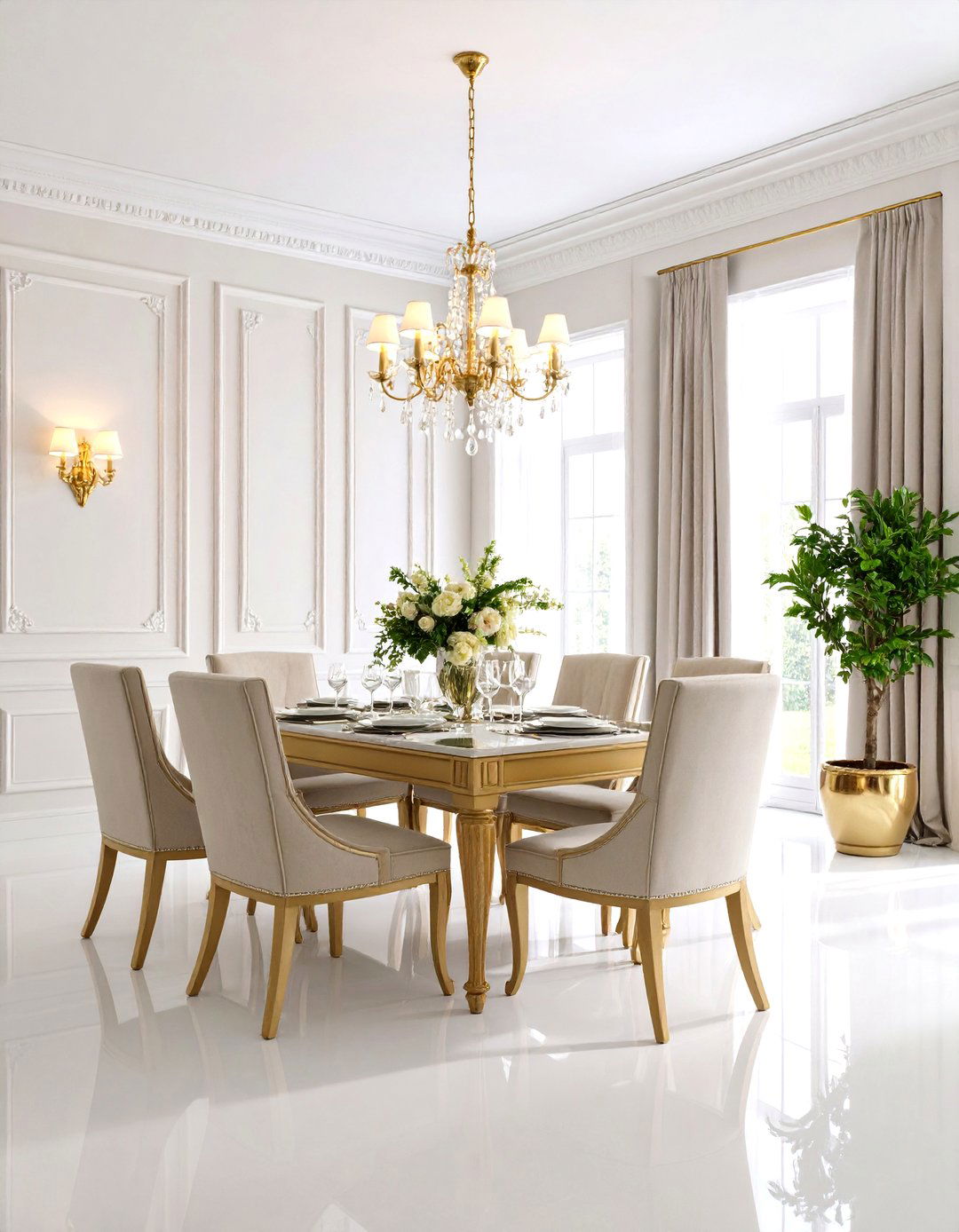
A raised-panel wainscoting layout instantly conveys formality, making it a natural partner for candlelit suppers in rooms that need gravitas. This Old House The beveled edges cast subtle shadows that read as architectural richness even under dimmed chandeliers. Keep the cap molding about one-third up the wall—roughly 90 cm in a standard 2.7 m room—to maintain pleasing proportions, echoing the bevel on the chair rail for a continuous line that guides the eye. This Old House Primed MDF panels are cost-efficient and expand less than solid pine; leave a slender gap at corners before caulking so seasonal movement never cracks the paint. Finish in satin cream or deep navy for a heritage-hotel vibe that hides small scuffs between touch-ups.
2. Contemporary Board-and-Batten Wainscoting Grid
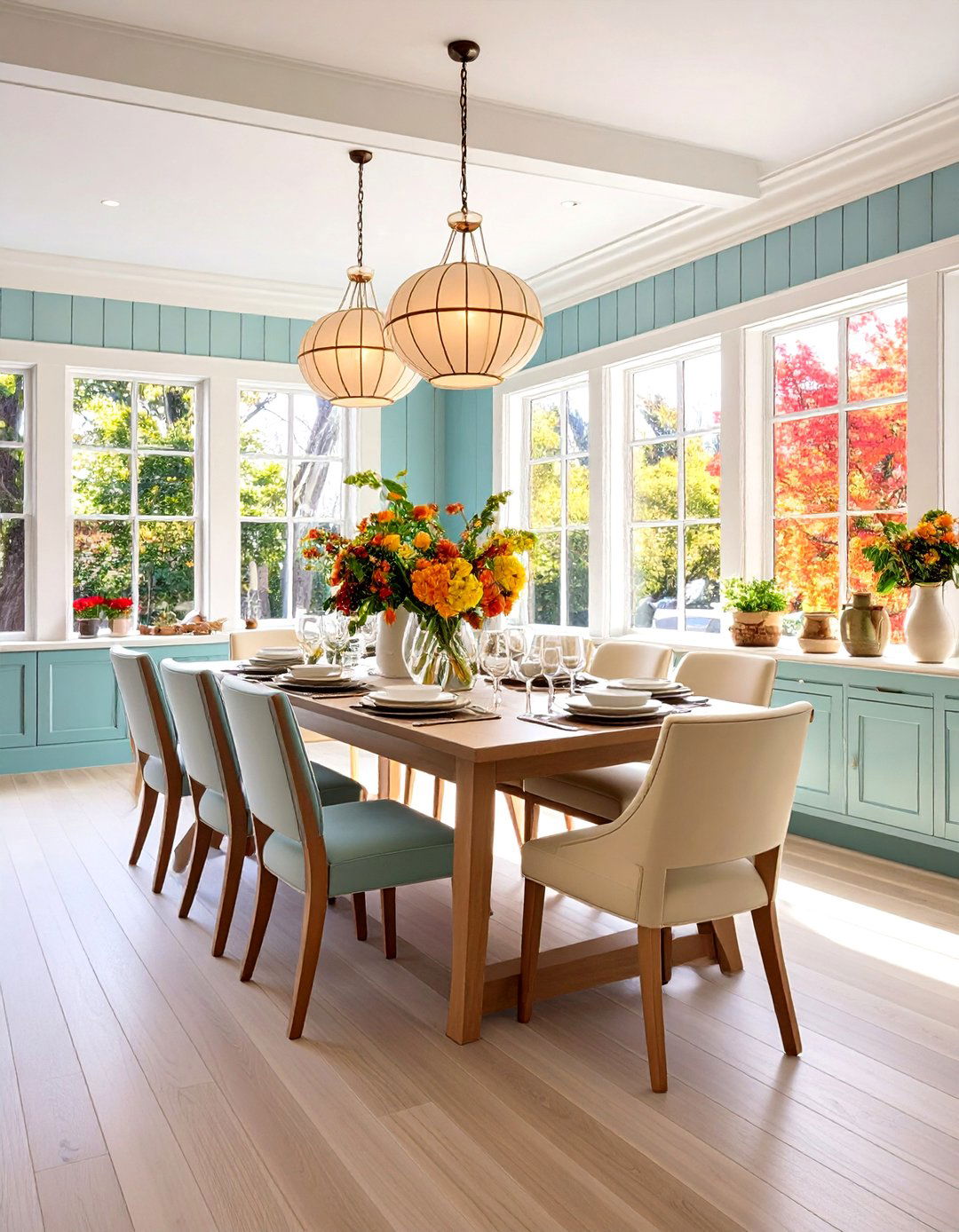
Unlike ornate period profiles, board-and-batten wainscoting relies on flat backing boards and slim vertical battens to build a crisp grid that feels equal parts farmhouse and Scandinavian. This Old House Real Simple Spacing battens at 400 mm centers lets you rip a single plywood sheet efficiently while visually stretching walls—handy when a dining room feels squat. Paint boards and wall in the same color so shadows, not contrast, define the pattern. Hang the rail high enough that artwork sits fully above it to avoid mid-line clutter. A washable semi-matte hides roller texture yet wipes clean after spaghetti night, keeping the minimalist grid pristine.
3. Picture-Frame Molding Wainscoting for Gallery Glamour
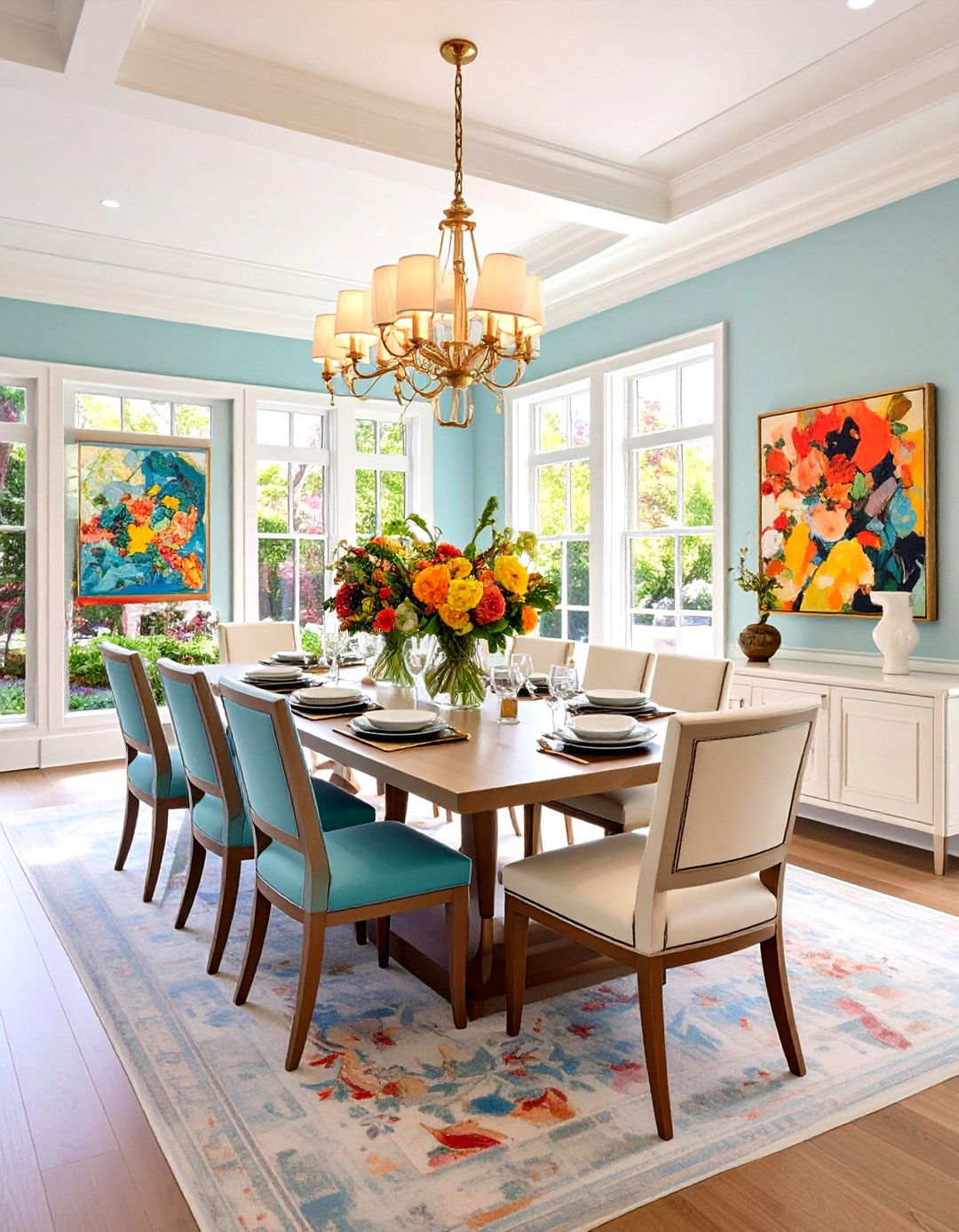
For rooms where art rotates often, picture-frame molding wainscoting supplies a subtle panel grid that echoes gallery walls without stealing the spotlight. Southern Living Create rectangles with 32 mm chair rail glued and pinned directly onto plaster, then paint wall and moldings a single hue to mimic built-ins. Because the wall itself remains the substrate, the treatment weighs little—ideal for apartments. Pre-prime moldings to prevent nail pops and seal end grain. Elevate the look with patterned wallpaper above or statement art pieces; the quiet frames keep visual order while the enamel below shrugs off chair-back bumps.
4. Cottage-Style Beadboard Wainscoting Up to Chair Rail
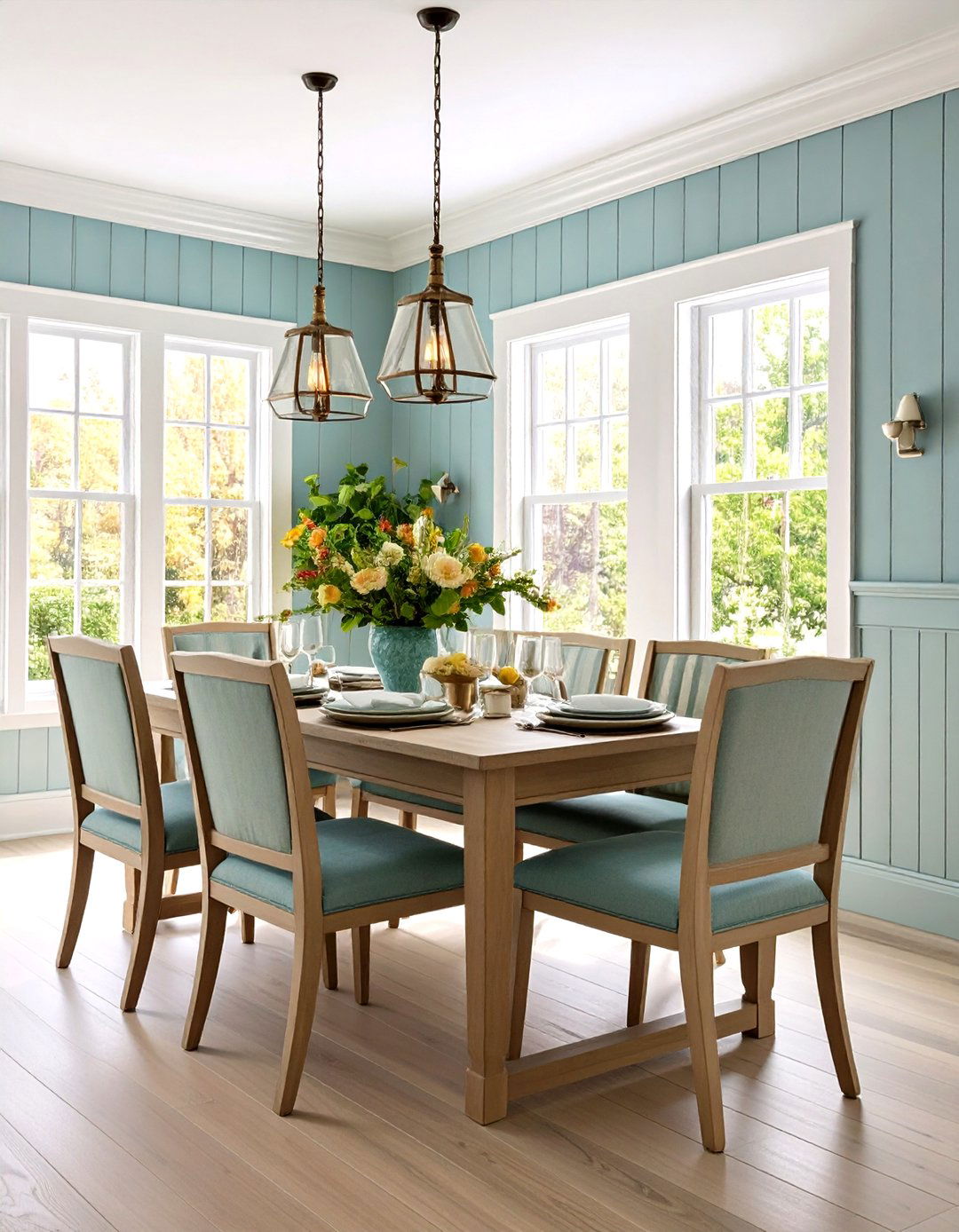
Nothing says relaxed cottage supper like beadboard wainscoting capped at classic chair-rail height. The evenly spaced grooves trick the eye upward, making 2.4 m ceilings feel loftier. The Spruce Real Simple Prefinished PVC panels lock together fast and resist spills far better than pine, allowing carefree mopping after seafood boils. Run adhesive in zigzags and face-nail at the tongue only; nails vanish in the bead once painted. A pastel wash—sage, duck-egg, or buttermilk—lets texture shine, while a bright white rail guards the wall where chairs meet. A quick coat of water-based polyurethane finishes the low-maintenance package.
5. Full-Height Shiplap Wainscoting Accent Wall
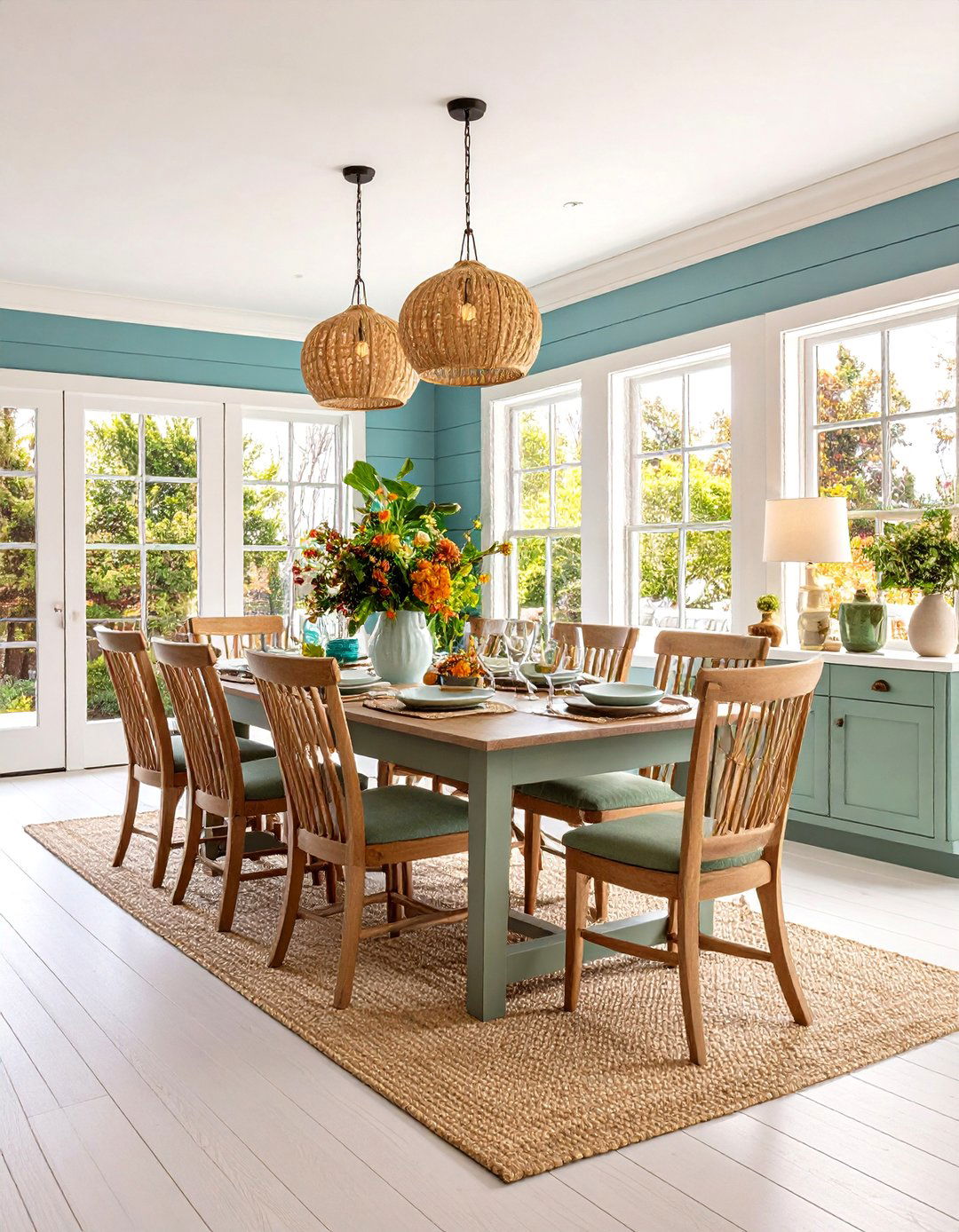
Take a cue from breezy coastal dining rooms and clad an entire feature wall in horizontal shiplap wainscoting for texture that feels informal yet tidy. Houzz The Spruce Install boards from floor to ceiling, then wrap the remaining walls in paint alone; the contrast highlights the slats without crowds. If your room is narrow, flip boards vertically to add perceived height. A micro-beveled edge hides minor expansion gaps while maintaining shadow lines. Seal knots with shellac primer before painting to stop resin bleed that can yellow seafood-dinner whites.
6. Two-Tone Painted Wainscoting for Depth
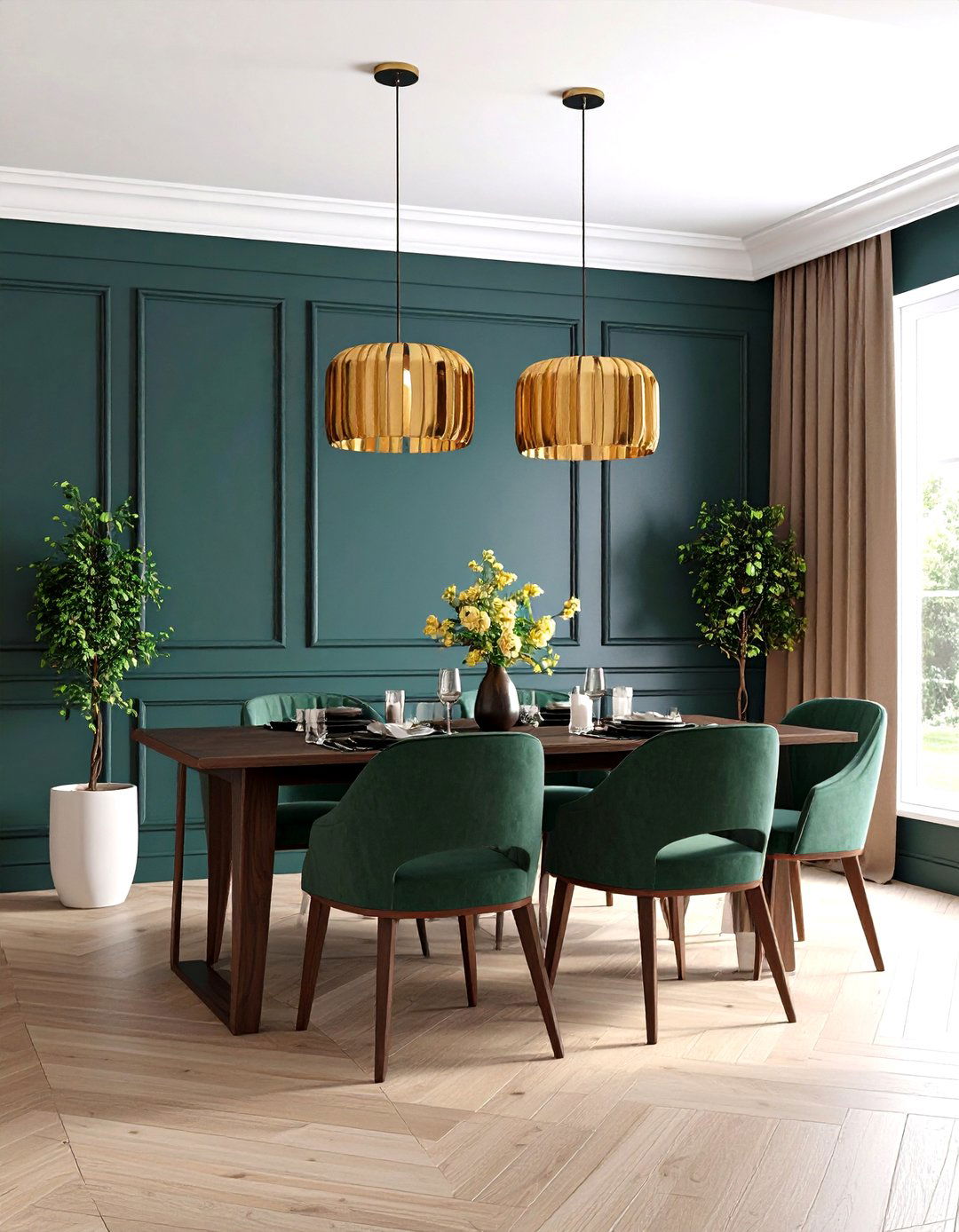
Painting wainscoting and upper walls in contrasting colors is an instant way to steal designer polish on a budget. Deep charcoal or forest green below grounds the dining set, while a lighter neutral above keeps the space open. Houzz Mask a razor-sharp line at the rail, and pull tape while paint is still tacky for perfection. For extra depth, coat the cap molding in the darker shade so the transition feels intentional. The two-tone scheme also future-proofs décor: freshen the lighter paint as trends shift without touching the hard-wearing enamel on the panels.
7. Dark Moody Wainscoting for Dramatic Sophistication
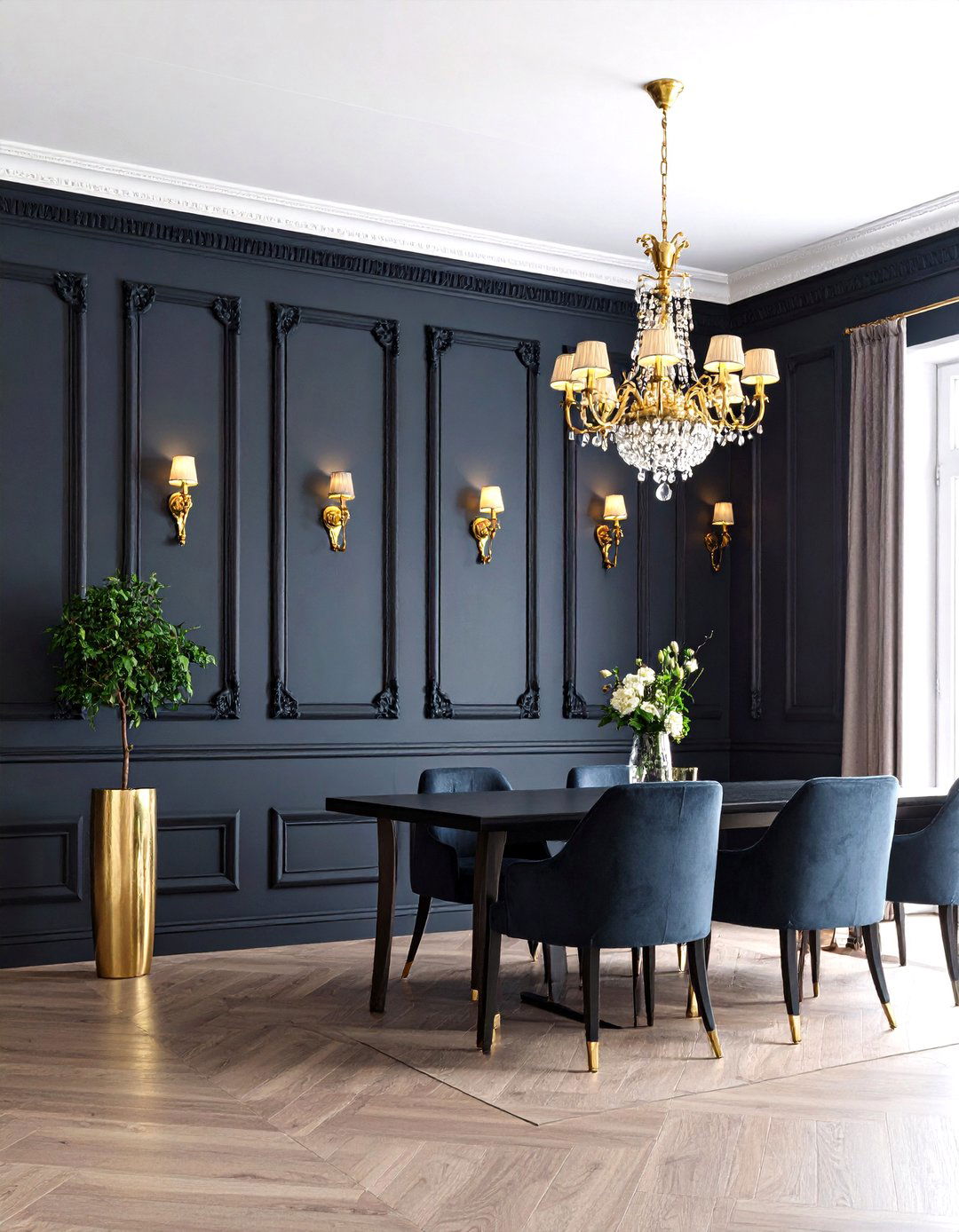
Sometimes dinner calls for drama. Paint raised, flat, or board-and-batten wainscoting in a nearly black egg-shell finish, then extend the hue onto baseboards and door trim for an enveloping, restaurant-like ambience. Real Simple Because dark colors reveal roller marks, roll from one stile to the next in single strokes and back-brush edges immediately. Balance the cocoon with gleaming brass sconces or a crystal chandelier that bounces light off subtle panel shadows. Upholstered dining chairs pop wildly against the inky backdrop, ensuring guests—and entrées—take center stage.
8. Natural Wood Wainscoting for Warmth
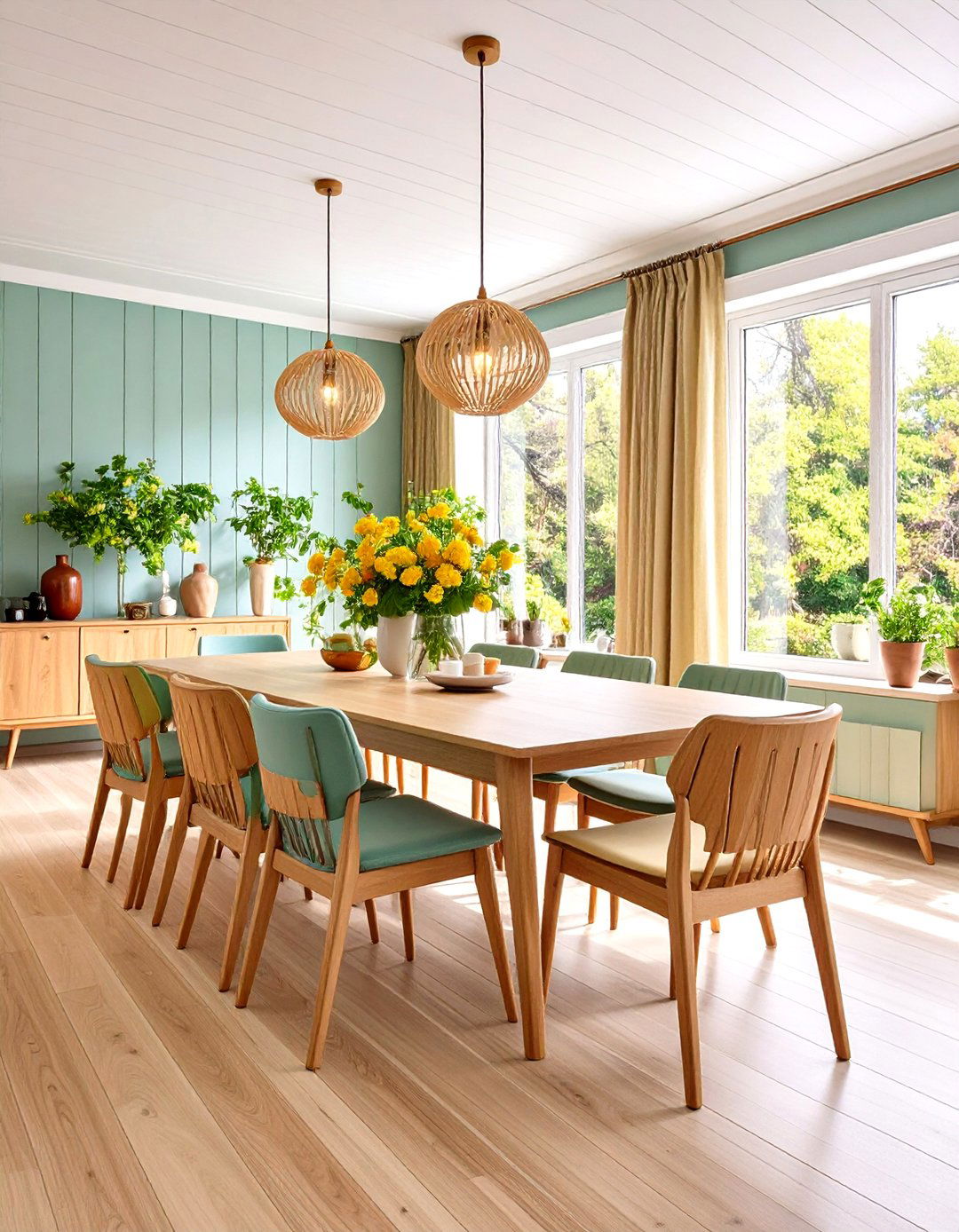
If your dining room lacks warmth, leave wainscoting unpainted and celebrate real timber grain. Clear-coat white oak or walnut raised panels for a mid-century feel, or lime-wash knotty pine for rustic charm. Modern water-borne polyurethane resists red-wine splashes without the ambering of old oil varnish. This Old House The Spruce Pair warm boards with matte white walls above so the grain becomes organic artwork. To prevent seasonal gaps, acclimate boards inside for 72 hours and fasten with tongue-and-groove clips that allow quiet expansion—no creaks while guests toast.
9. Geometric Wall-Panel Wainscoting
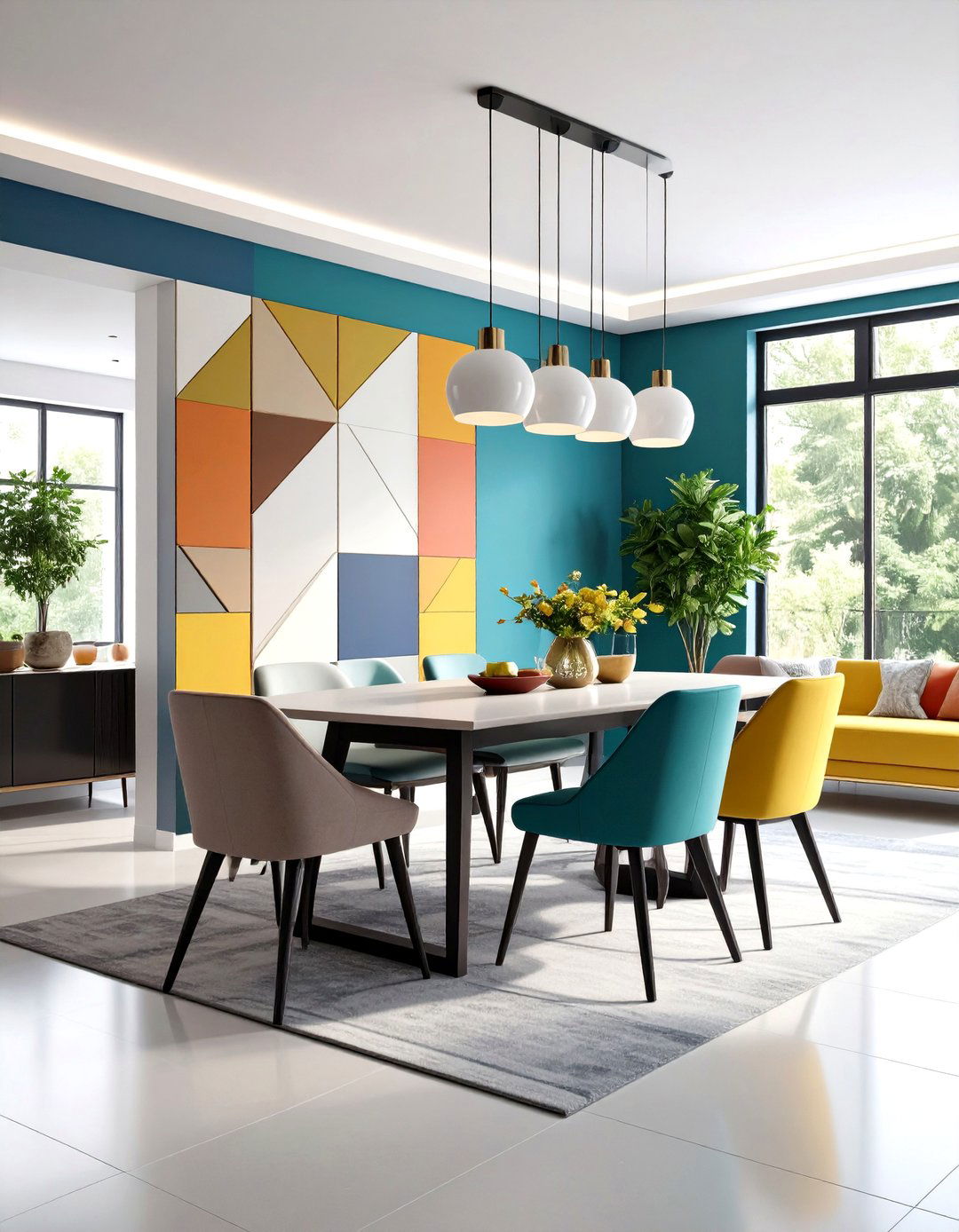
Looking for instant wow? Lay out battens in overlapping squares and diagonals for a geometric wainscoting pattern that doubles as wall art. Pinterest Keeps costs down by using 9 mm MDF strips instead of full panels; prime edges before caulking to prevent shrink lines. Paint both wall and battens in one saturated shade—terracotta or ocean blue—for a bold mural-like statement that still protects walls from tippy chair legs. Hidden LED strip lighting along the cap throws dramatic shadows that change with every dinner course.
10. Textured Grasscloth-Backed Wainscoting
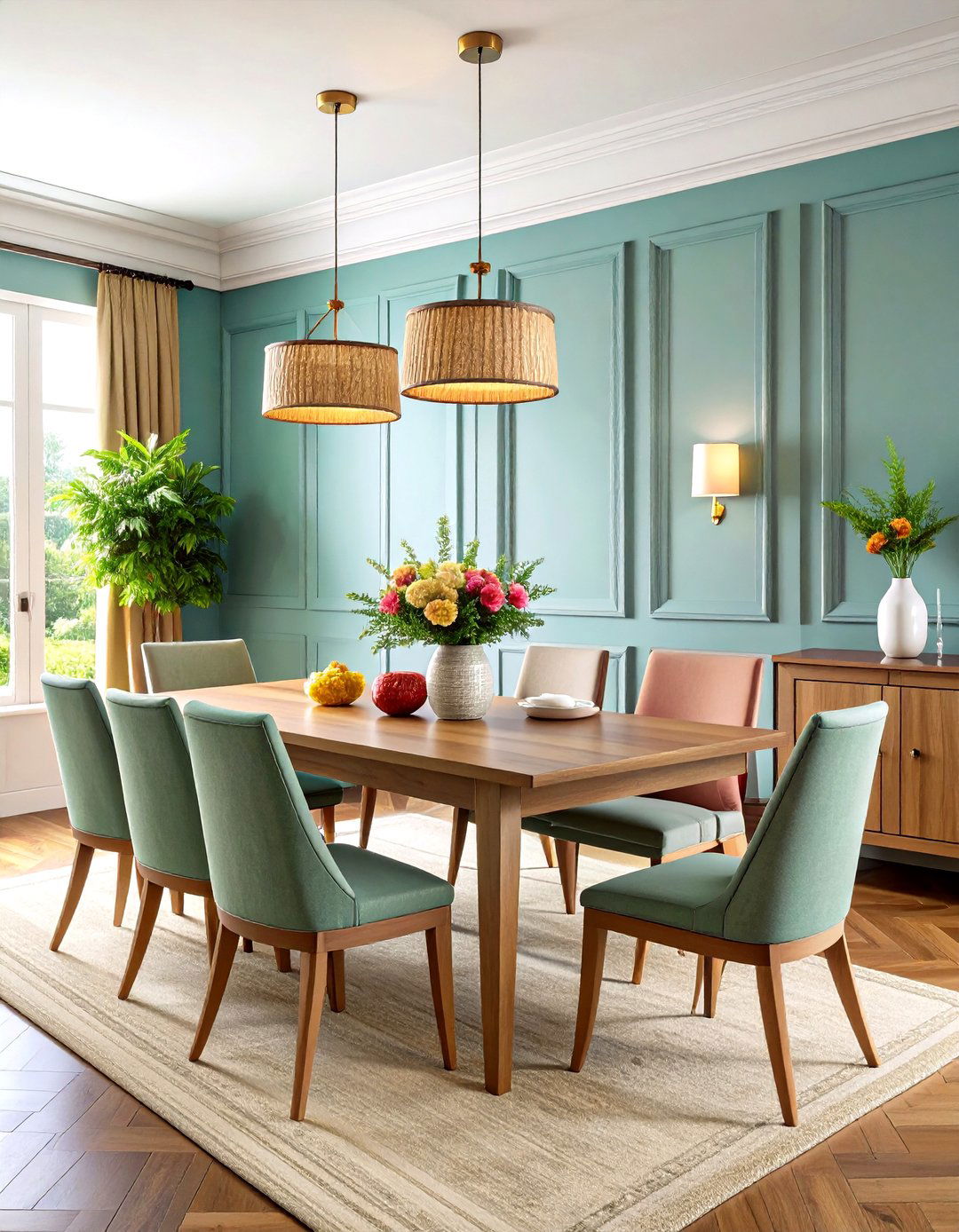
For tactile depth, line recessed panel centers with removable grasscloth before installing your cap rail. The natural fibers soften acoustics and echo woven table mats for cohesive styling. Seal the grasscloth with clear, matte acrylic to make ketchup splatter a wipe-off event. Pinterest Keep surrounding stiles and rails painted crisp white so the texture shines, and repeat the fiber on nearby drum shades or artwork to pull the look together.
11. Mirrored Panel Wainscoting to Amplify Light
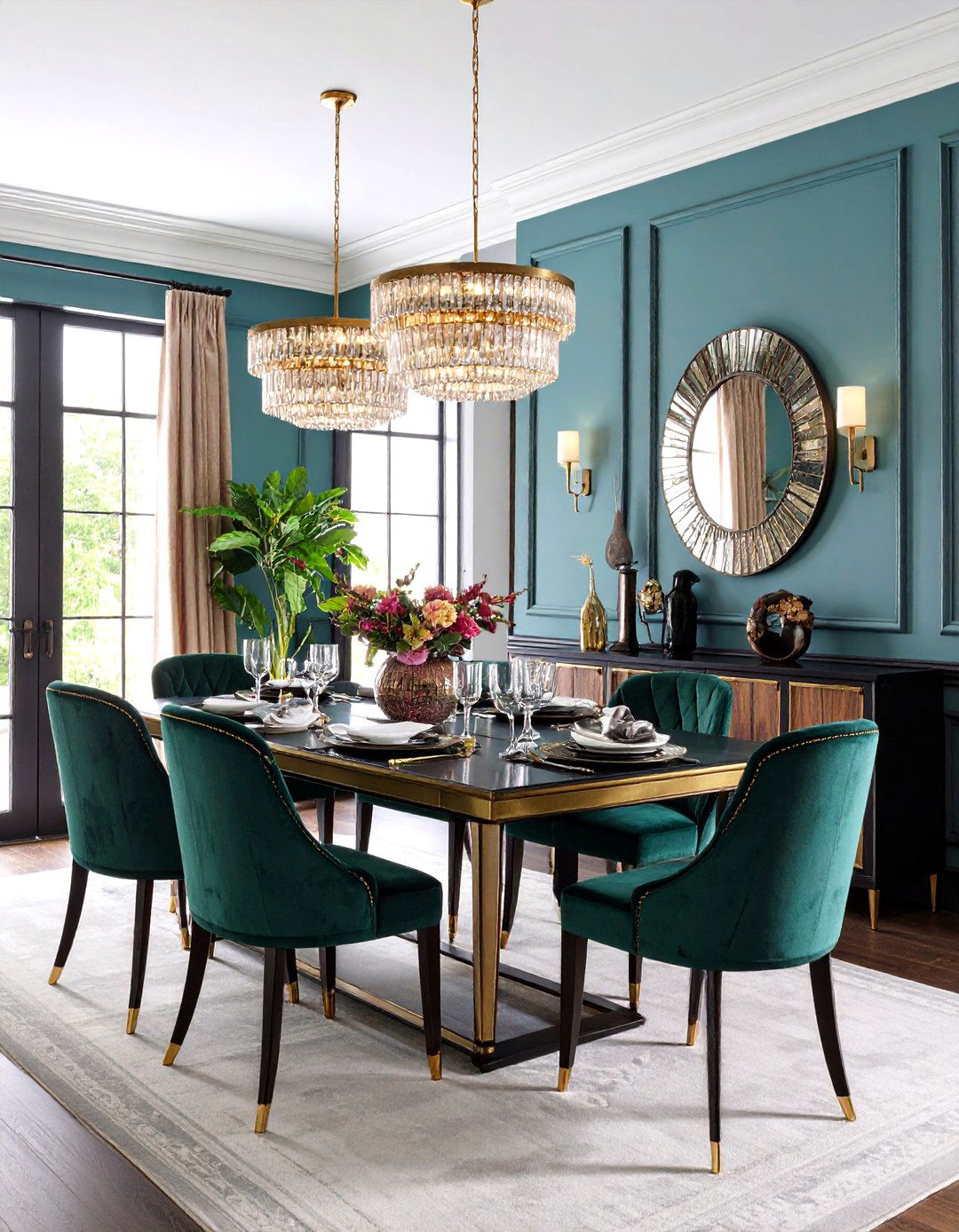
Small dining room? Swap timber inserts for antiqued mirror panels to bounce candlelight and make square footage feel almost double. Pinterest Architectural Digest Use safety-backed mirror tiles glued to MDF inserts, then slip them into a traditional stile-and-rail frame. Antiqued finishes hide fingerprints better than clear glass while lending Art Deco elegance. Ground the shimmer with matte black rails so reflections read as intentional jewel boxes, not gym-wall mirrors.
12. Curved Wainscoting for Bay Windows
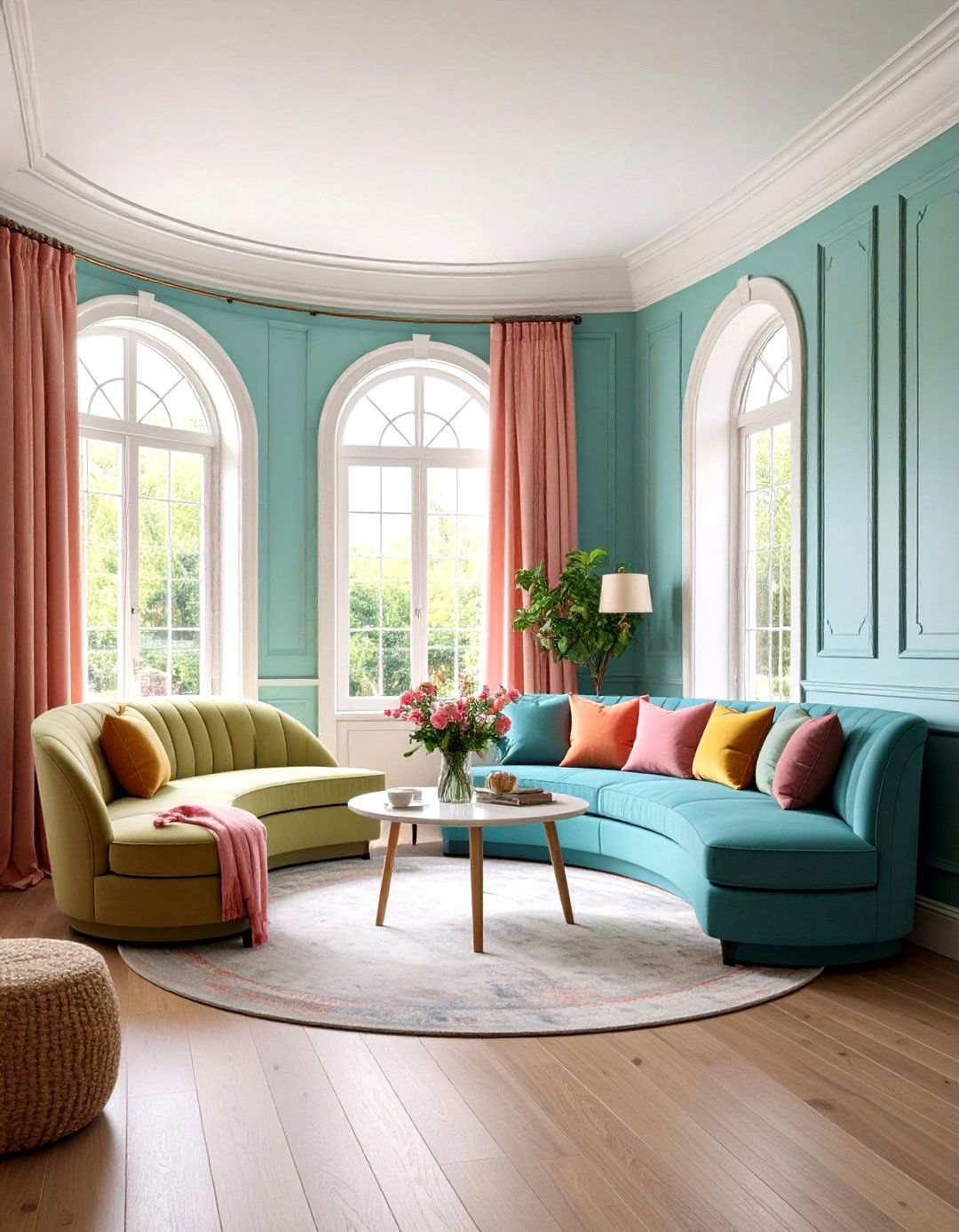
Dining nooks often tuck into bays, where standard straight panels gap. Instead, score thin MDF sheets horizontally and bend them to follow the curve, then add flexible cap molding for a seamless sweep of wainscoting. Fill kerf cuts with lightweight filler before painting so the surface looks solid. Decorpad This gentle arc hugs built-in banquettes, making the breakfast-for-dinner crowd feel cocooned.
13. Contrasting Cap-Molding Wainscoting
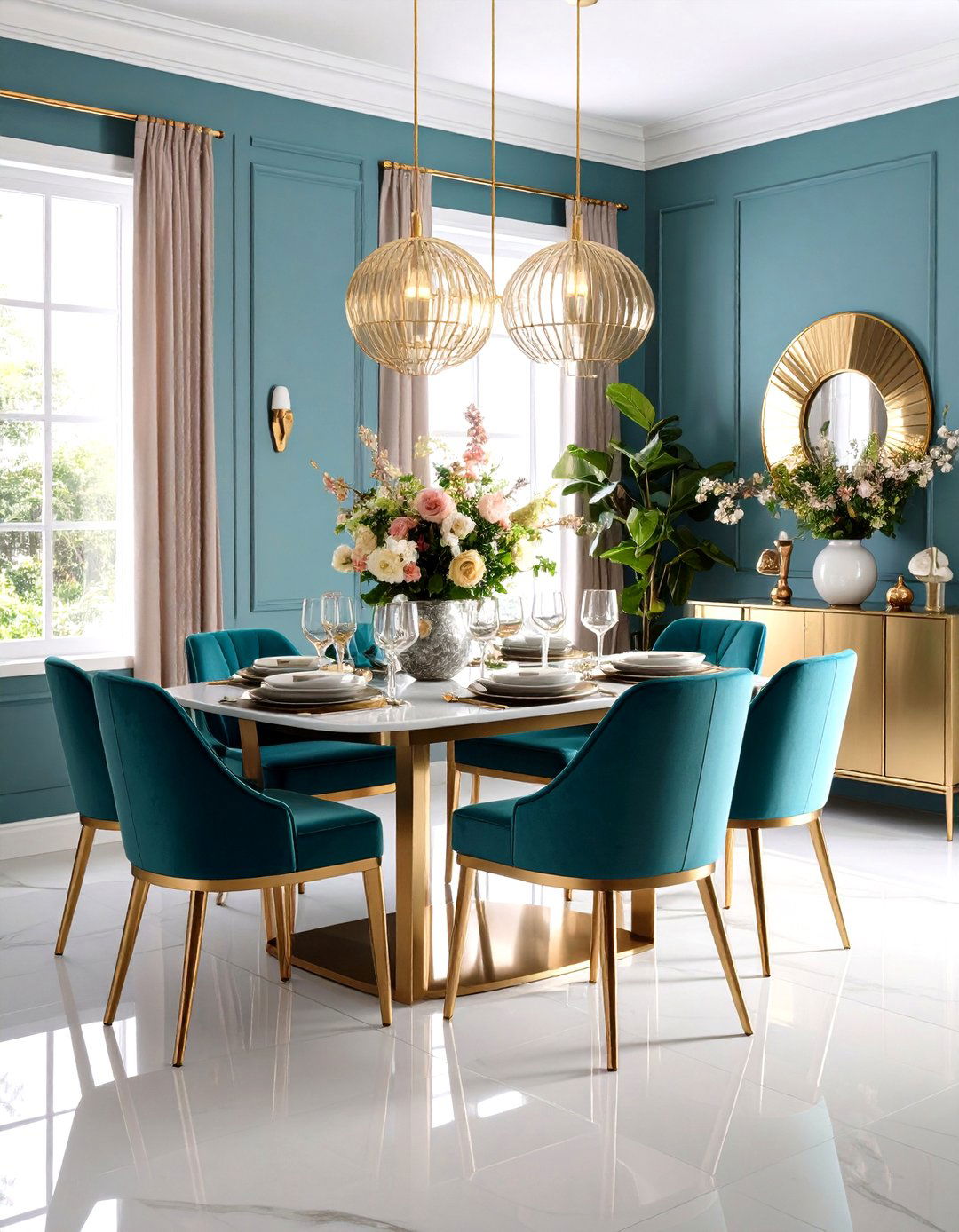
Highlight architectural detail by painting only the wainscoting’s cap molding in a metallic or high-gloss accent color—think aged brass on navy panels. The skinny stripe traces the room like jewelry, marrying light fixtures with wall treatment. Use durable alkyd enamel so cutlery dings polish out easily with microfiber. The Home Depot For consistency, repeat the metal finish on switch plates or centerpiece hurricanes.
14. Reclaimed-Wood Wainscoting for Eco Appeal
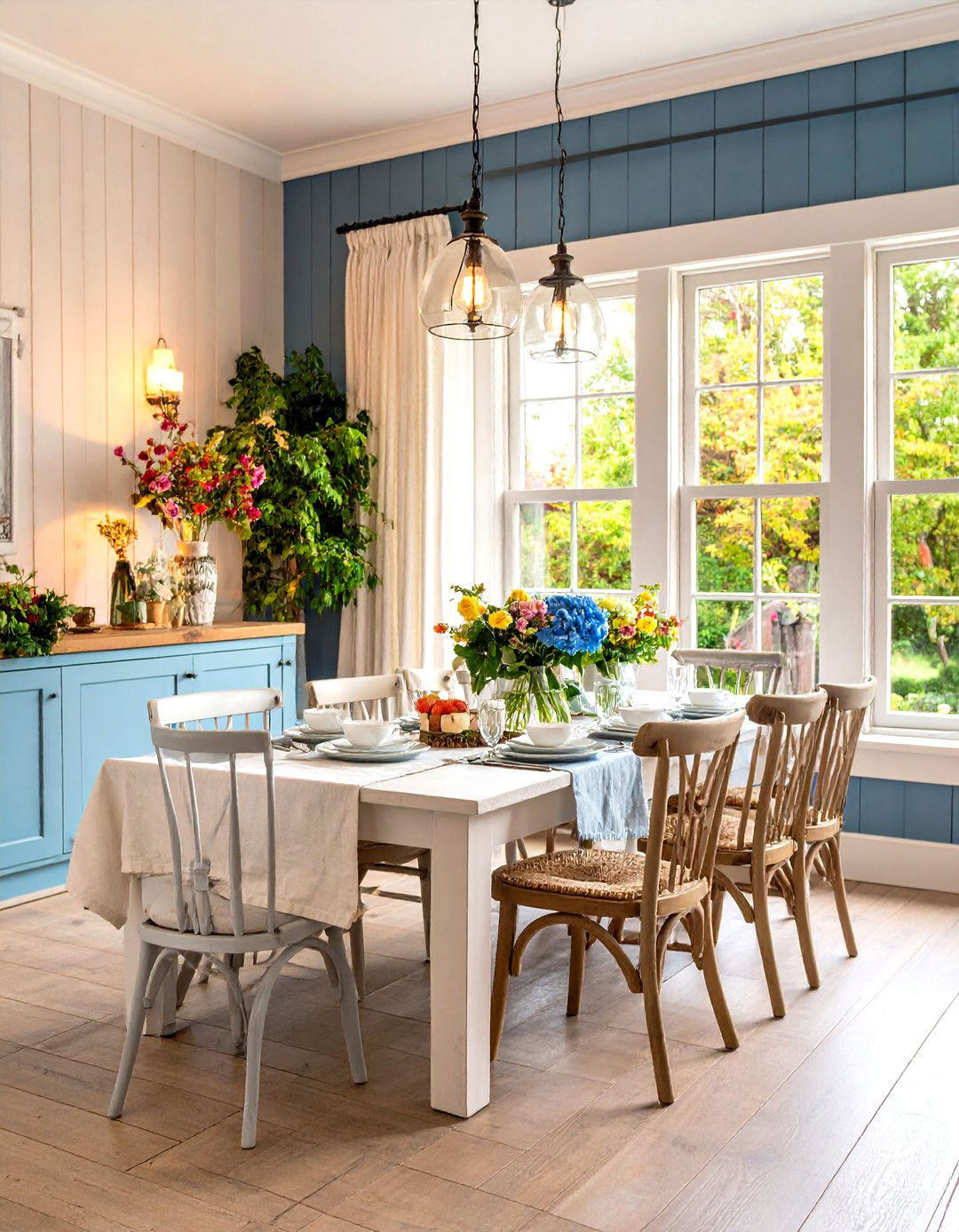
Upcycle barn siding or factory floorboards into wainscoting to add instant history and prevent landfill waste. Wire-brush the boards, leaving saw marks for texture, and back-plane with 9 mm plywood for stability. Seal with low-VOC matte polyurethane to lock in splinters without adding shine. The varied patina pairs beautifully with simple white dishes and linen tablecloths, letting food colors pop. Pinterest
15. Thin Vertical Slat Wainscoting for Height Illusion
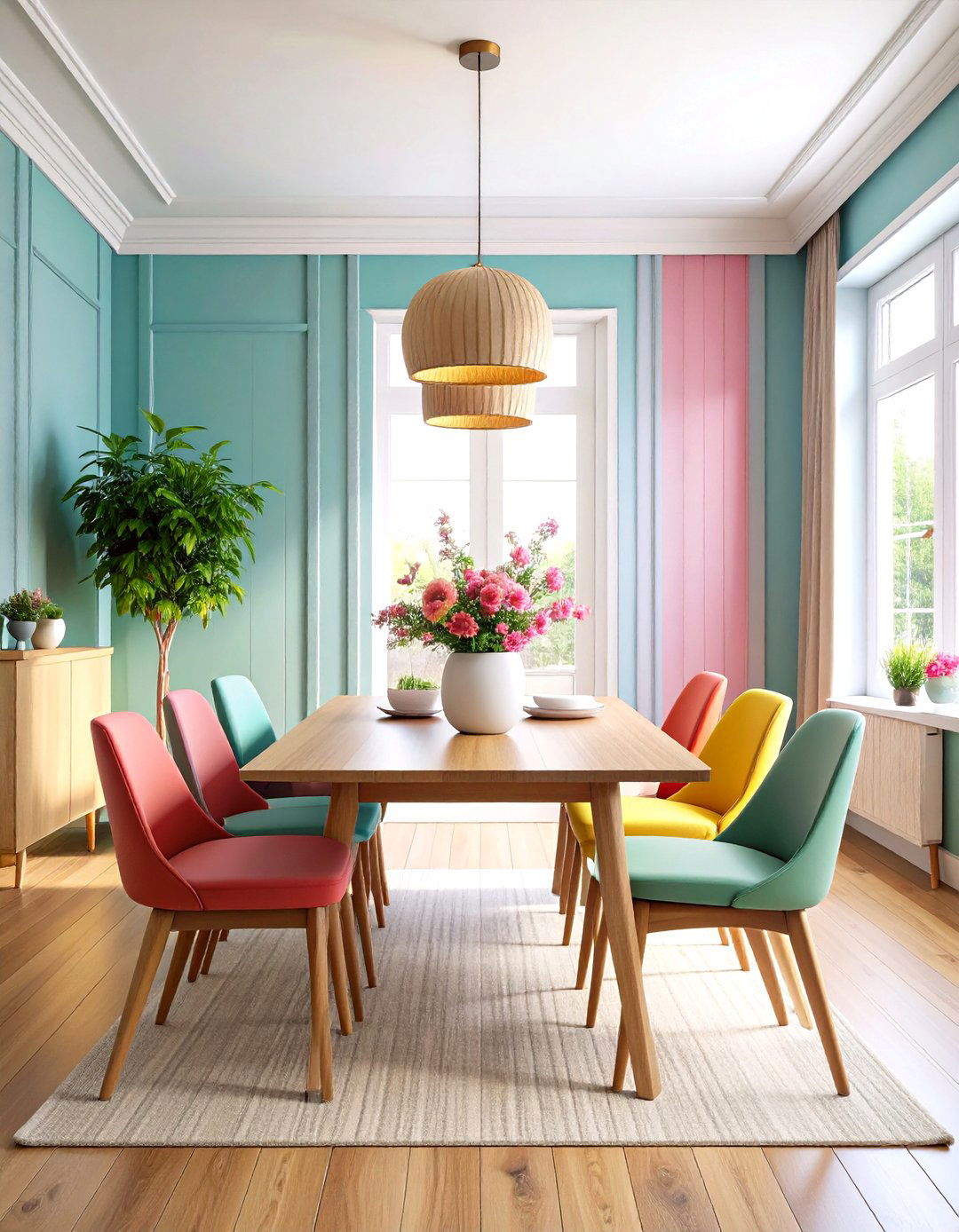
Vertical slat walls, a modern riff on beadboard, use 19 mm square battens spaced a batten-width apart, creating rhythmic shadows that make ceilings soar. Pinterest Run battens full height from baseboard to cap rail, then paint in one solid hue so texture replaces ornament. Because battens stand proud, pre-sand edges and nail from the side to avoid visible holes. A gentle eggshell finish glows under side lighting without glare.
16. Metallic Inlay Wainscoting Accents
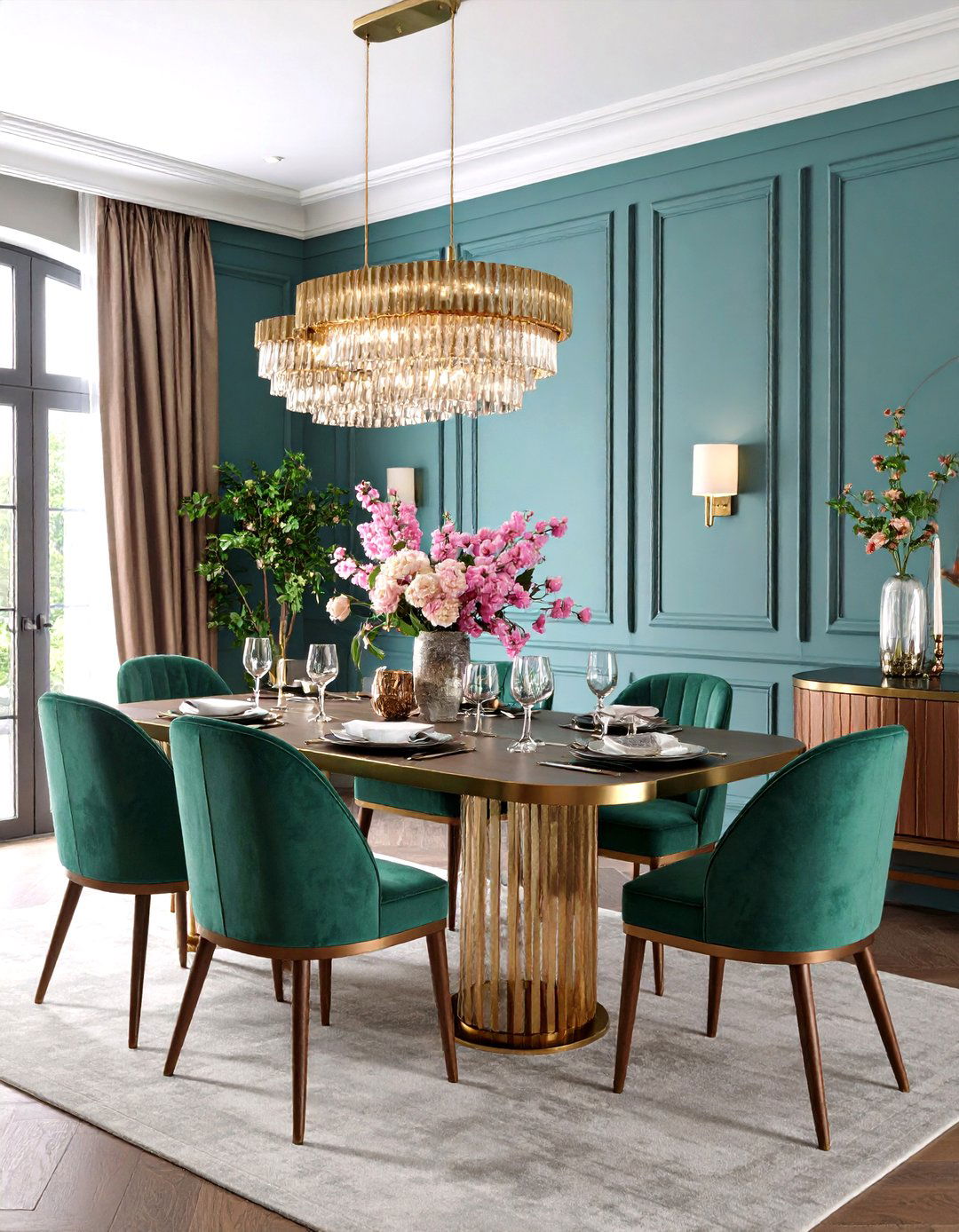
Embed narrow metal channels—brass, copper, or steel—between flat panel rails for a luxe shimmer that mirrors cutlery on the table. Use self-adhesive mosaic strips set flush with the wood, then finish panels in a dark matte paint so the metal lines pop. The method costs little yet reads bespoke, perfect for statement dinner parties. Dakota Tin
17. Scandinavian White Wainscoting Simplicity
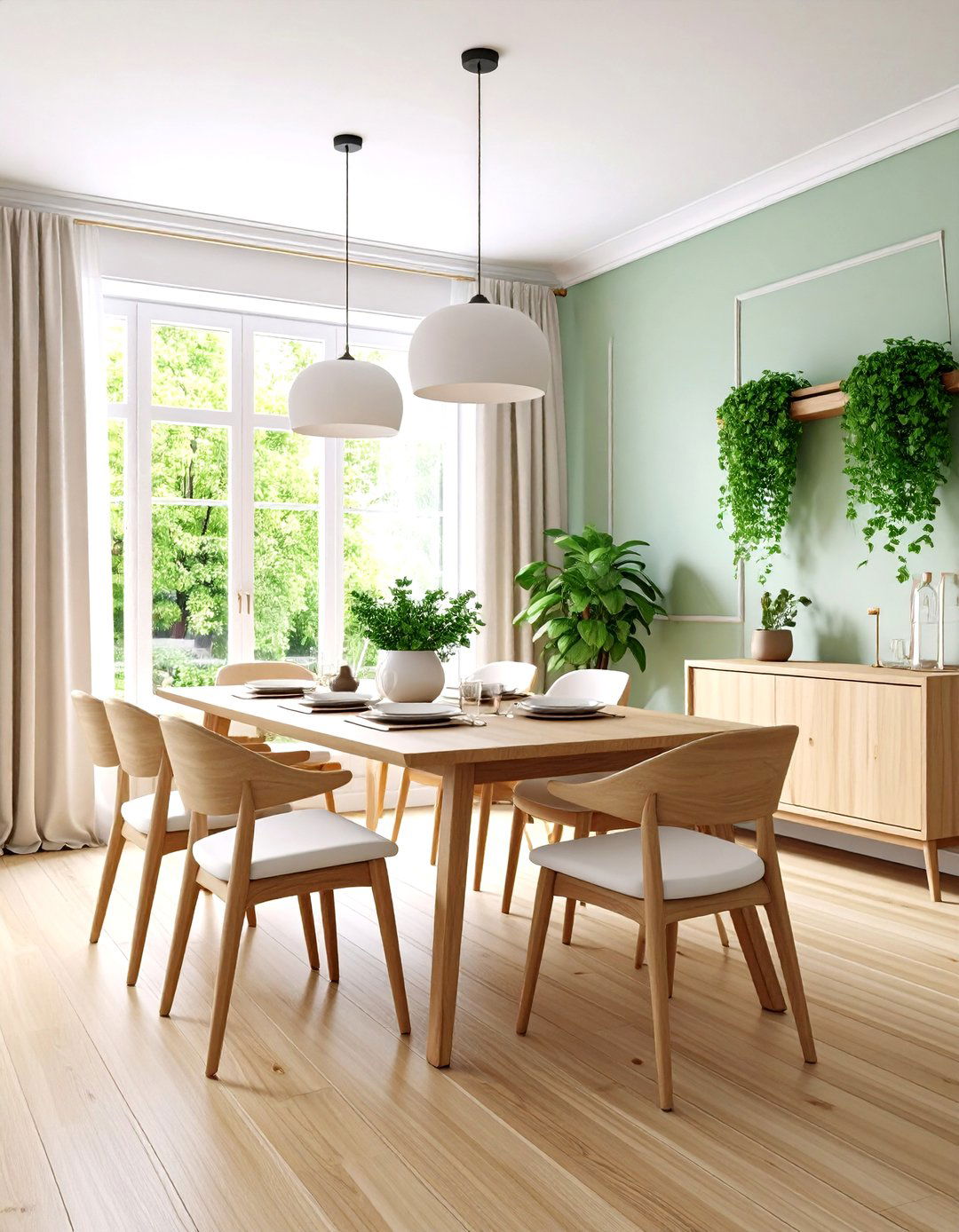
Scandi style embraces light. Coat simple flat-panel wainscoting, baseboards, and crown in the same soft white to create a calm envelope that lets natural wood furniture and greenery sing. A low-sheen acrylic hides kid fingerprints and is easy to patch. Keep hardware minimal—just slim black wall hooks for napkin rings—to maintain the uncluttered aesthetic.
18. Art-Deco Wainscoting with Bold Trim Profiles
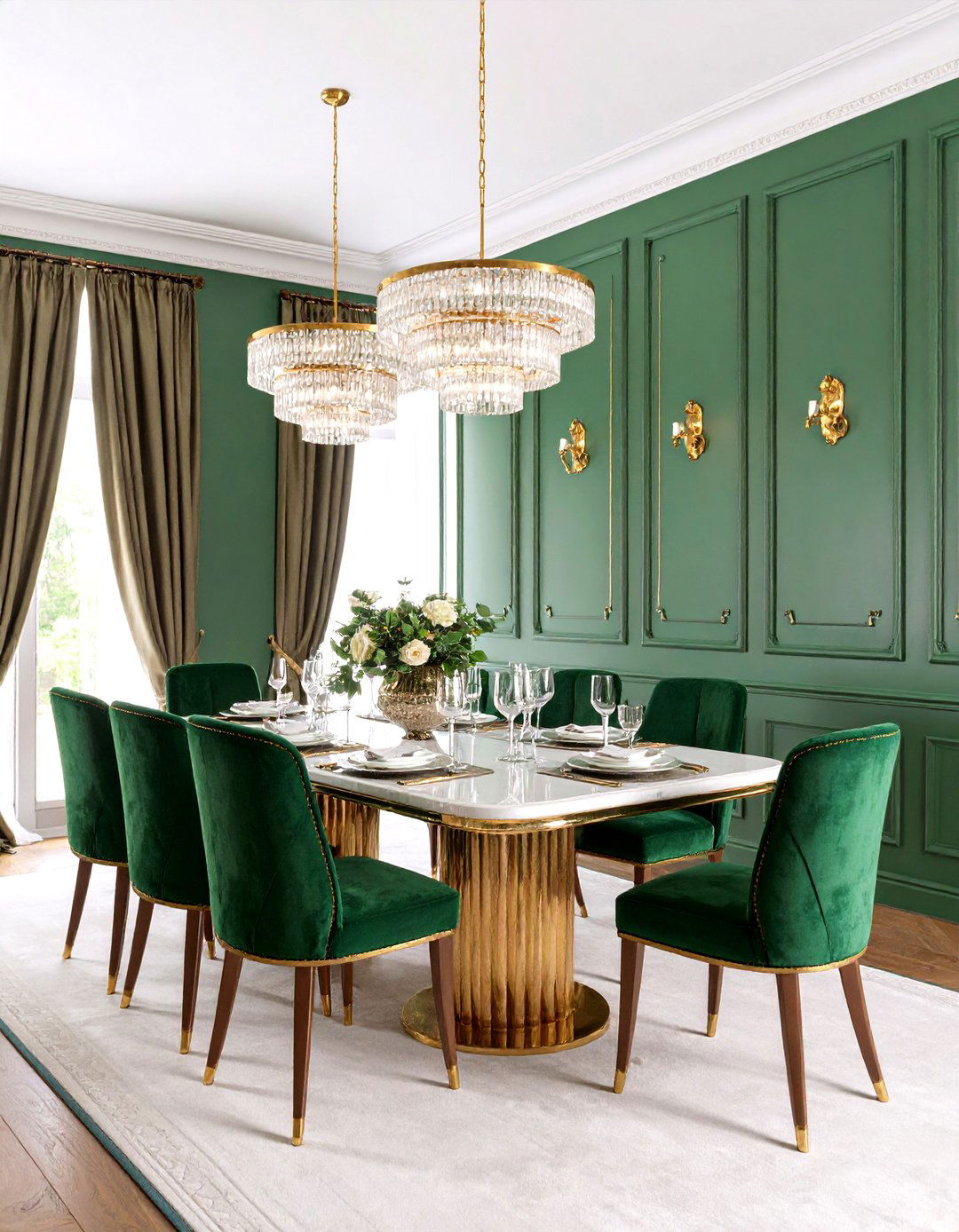
Channel 1930s supper clubs by combining tall stepped baseboards with picture-rail-height cap molding, then paint everything in high-gloss hunter green. Wide, flat stiles separated by skinny reveals hint at skyscraper silhouettes. Pair with frosted-glass pendants and geometric rug patterns for full Deco drama. Southern Living
19. Wallpaper-Above-Wainscoting Combos
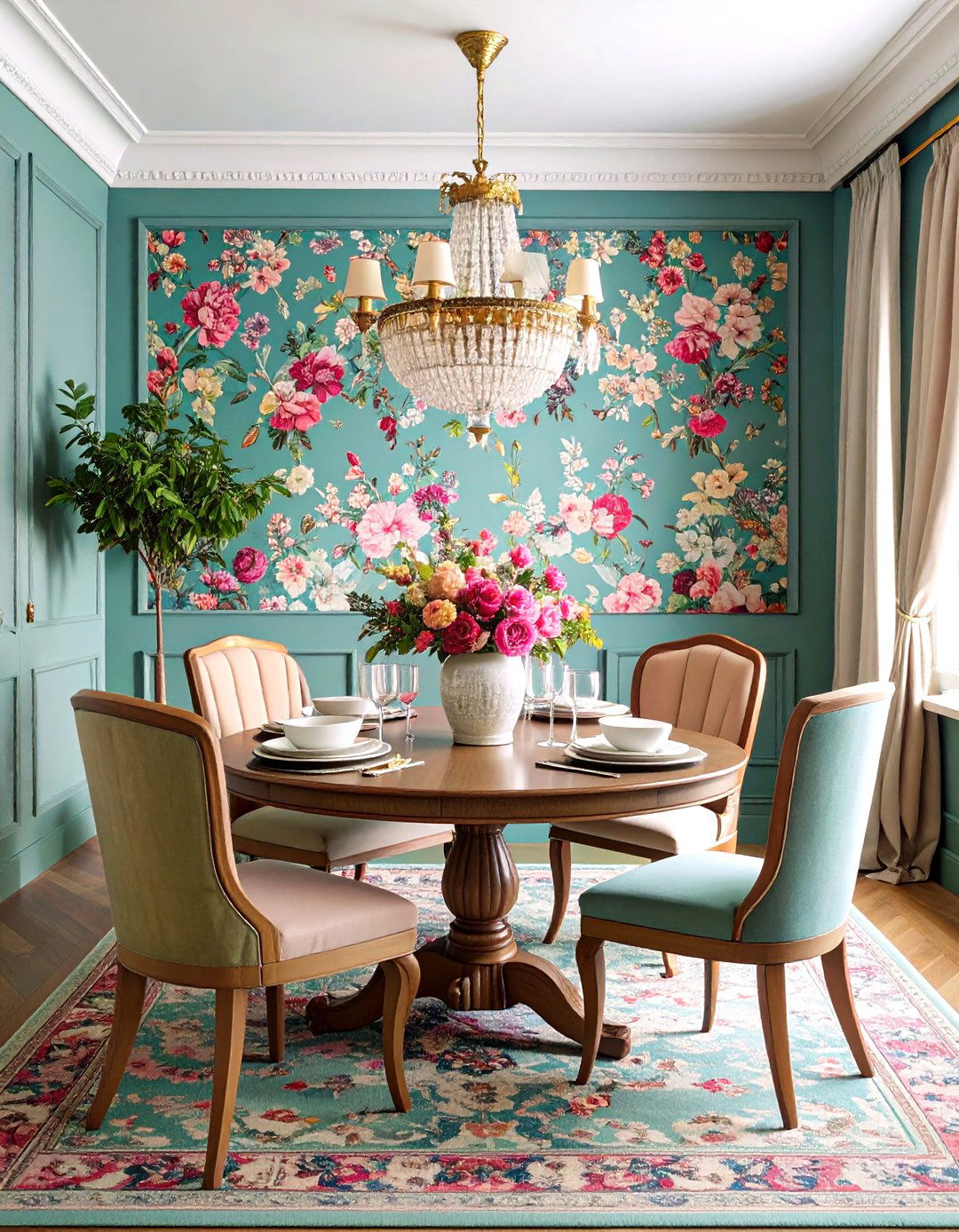
Use classic wainscoting as a canvas-calm base, then unleash vibrant wallpaper above for instant personality. The chair rail breaks busy motifs so patterns never overwhelm guests. Choose scrubbable vinyl below to handle spills and peel-and-stick wallpaper above for easy seasonal change-outs. Houzz Better Homes & Gardens Coordinating colors between panel and paper—deep emerald rail under a palm print, for instance—ties the split treatment together.
20. Hidden-Storage Wainscoting Panels

Save square footage by hinging select recessed panels to reveal shallow cabinets for placemats, candles, or Bluetooth speakers. Magnetic push latches keep fronts flush; paint the reveals after installation so seams disappear. Pinterest Pinterest Label interiors discreetly and line with felt to stop dishware clink during hushed dinner conversations.
Conclusion:
Dining-room wainscoting is more than trim—it’s a versatile toolkit for shaping proportion, softening acoustics, hiding storage, and setting a memorable mood. From classically raised panels to daring mirrored grids, the twenty ideas above prove that any skill level, budget, or décor style can harness wainscoting’s protective strength and visual power to make every meal feel thoughtfully composed. Whichever direction you choose, measure twice, finish wisely, and let your new panels frame lively conversations for years to come.


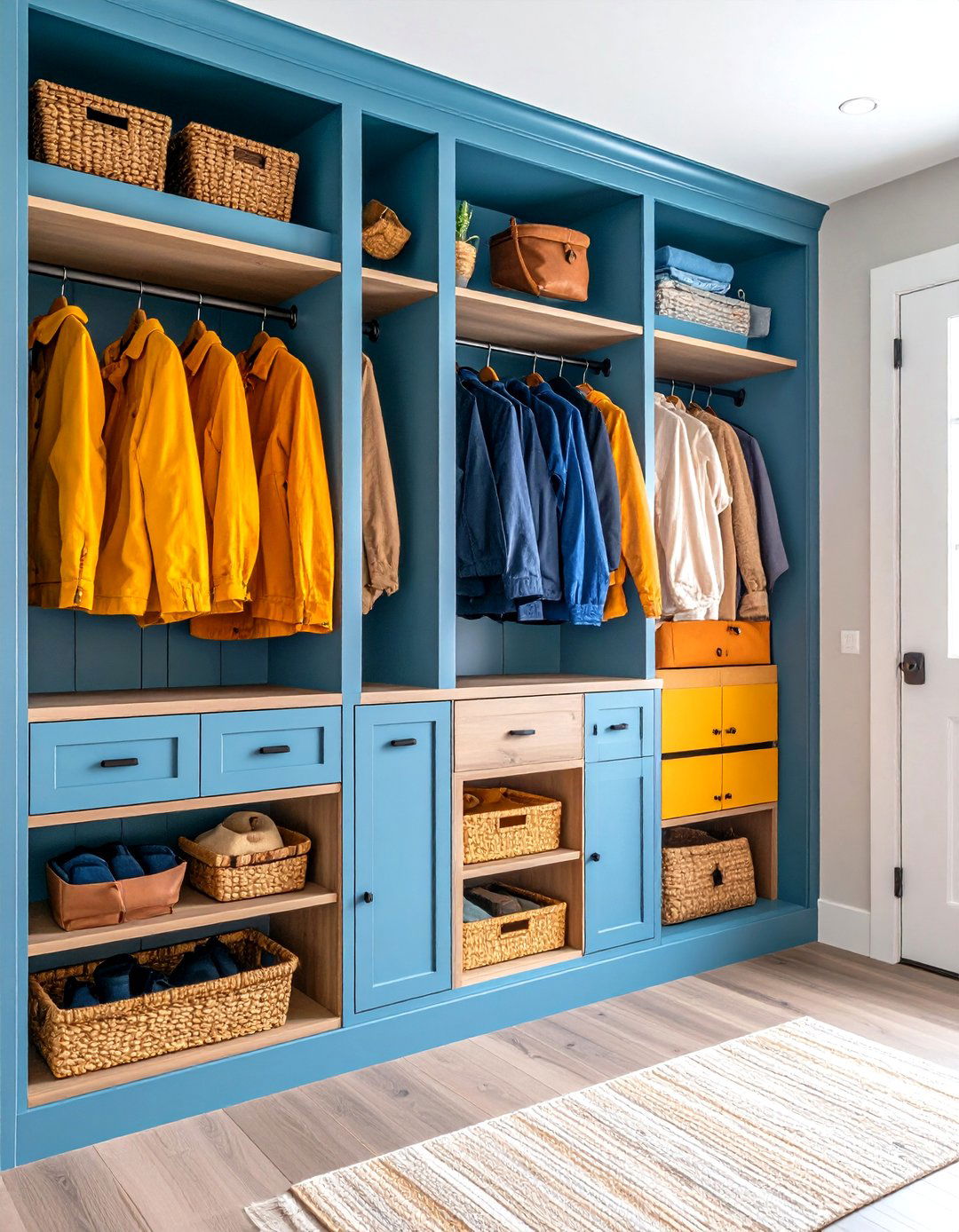
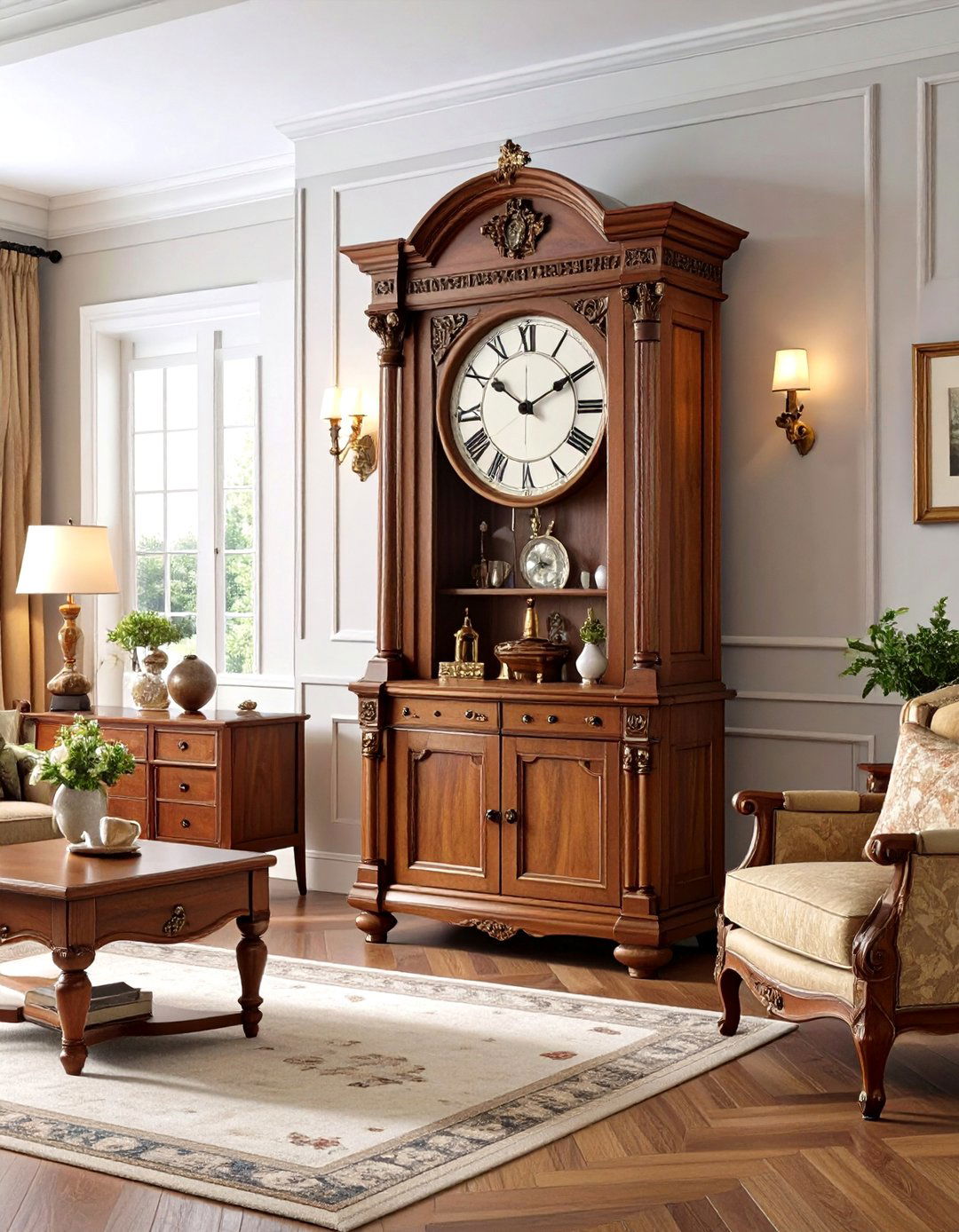
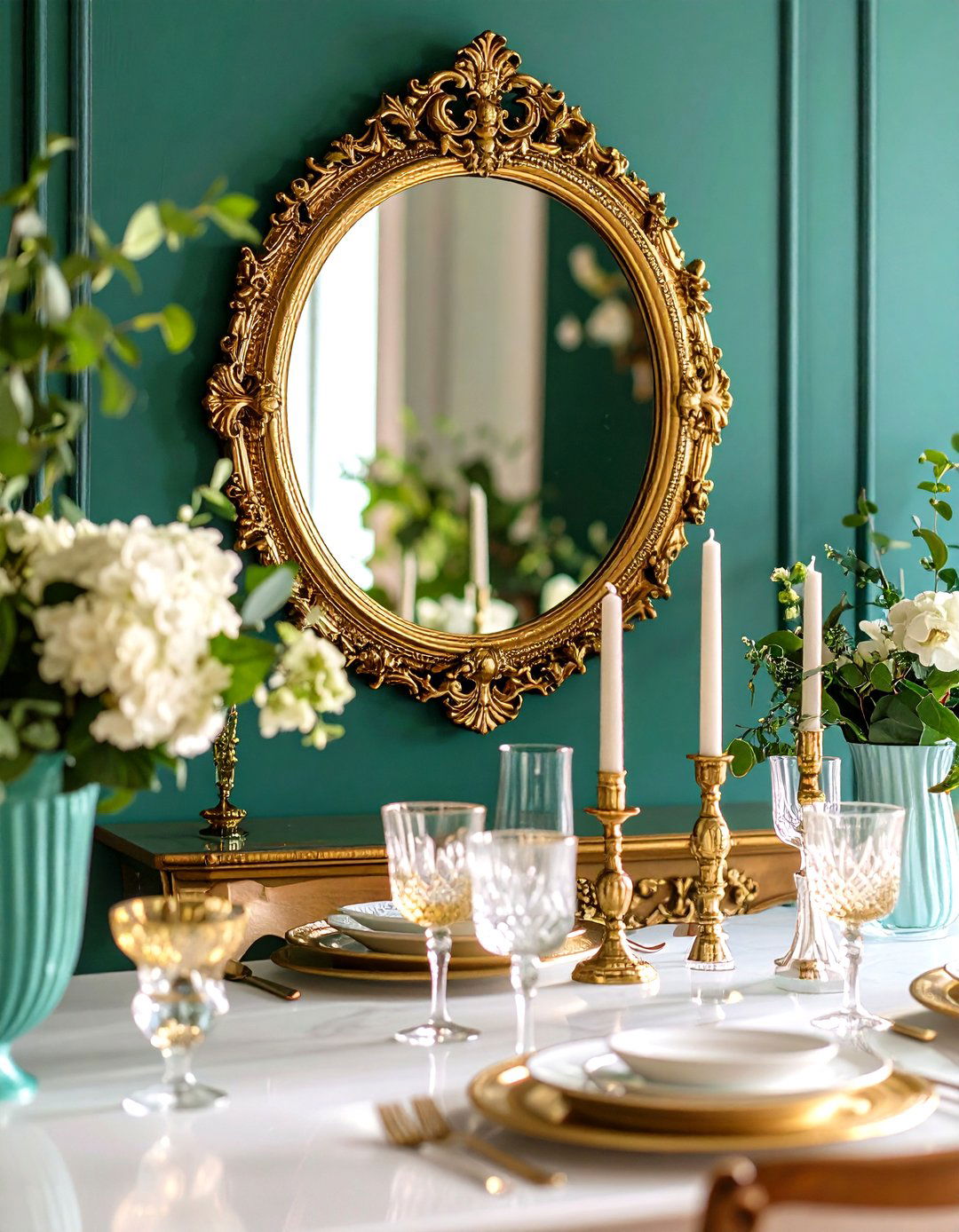
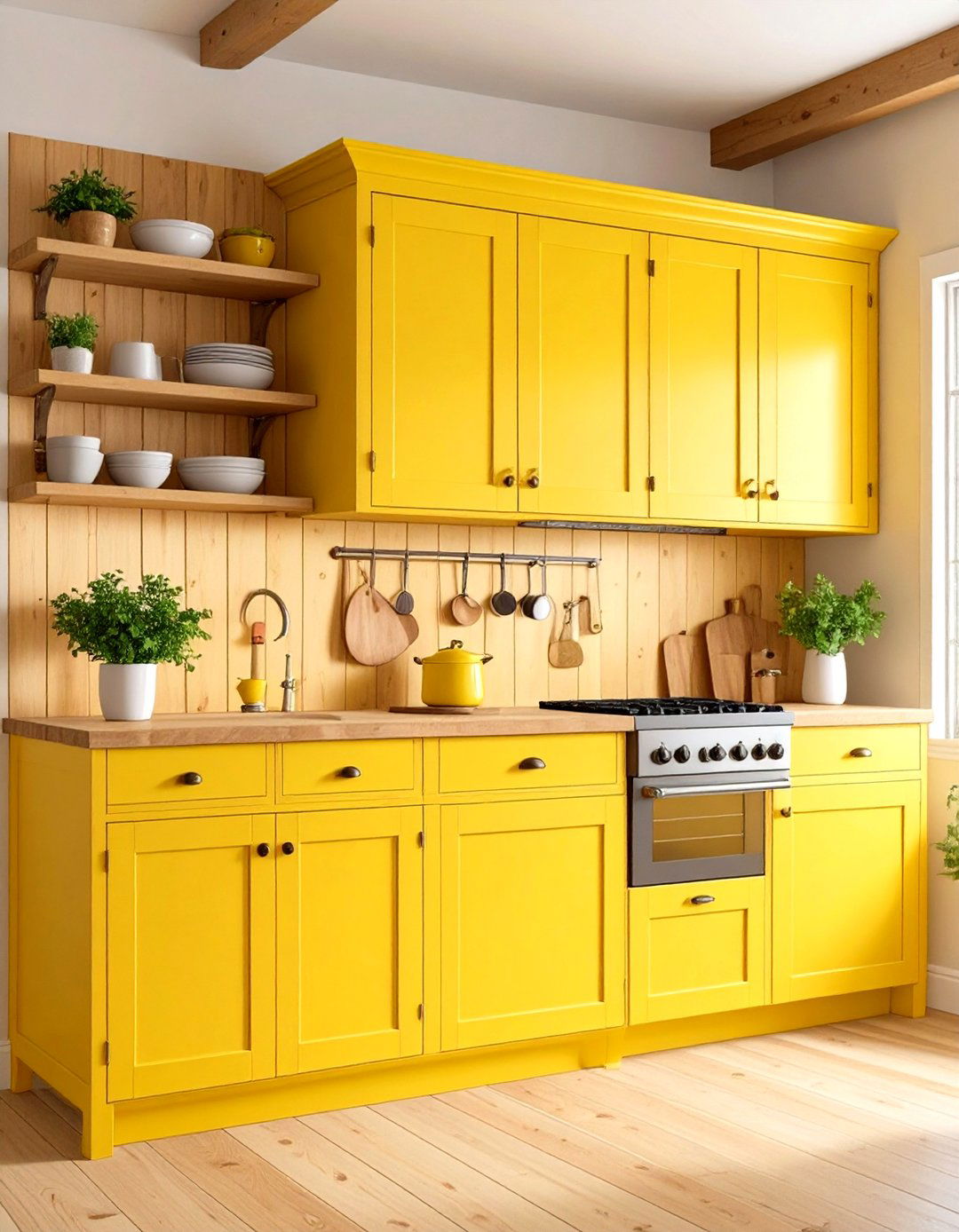
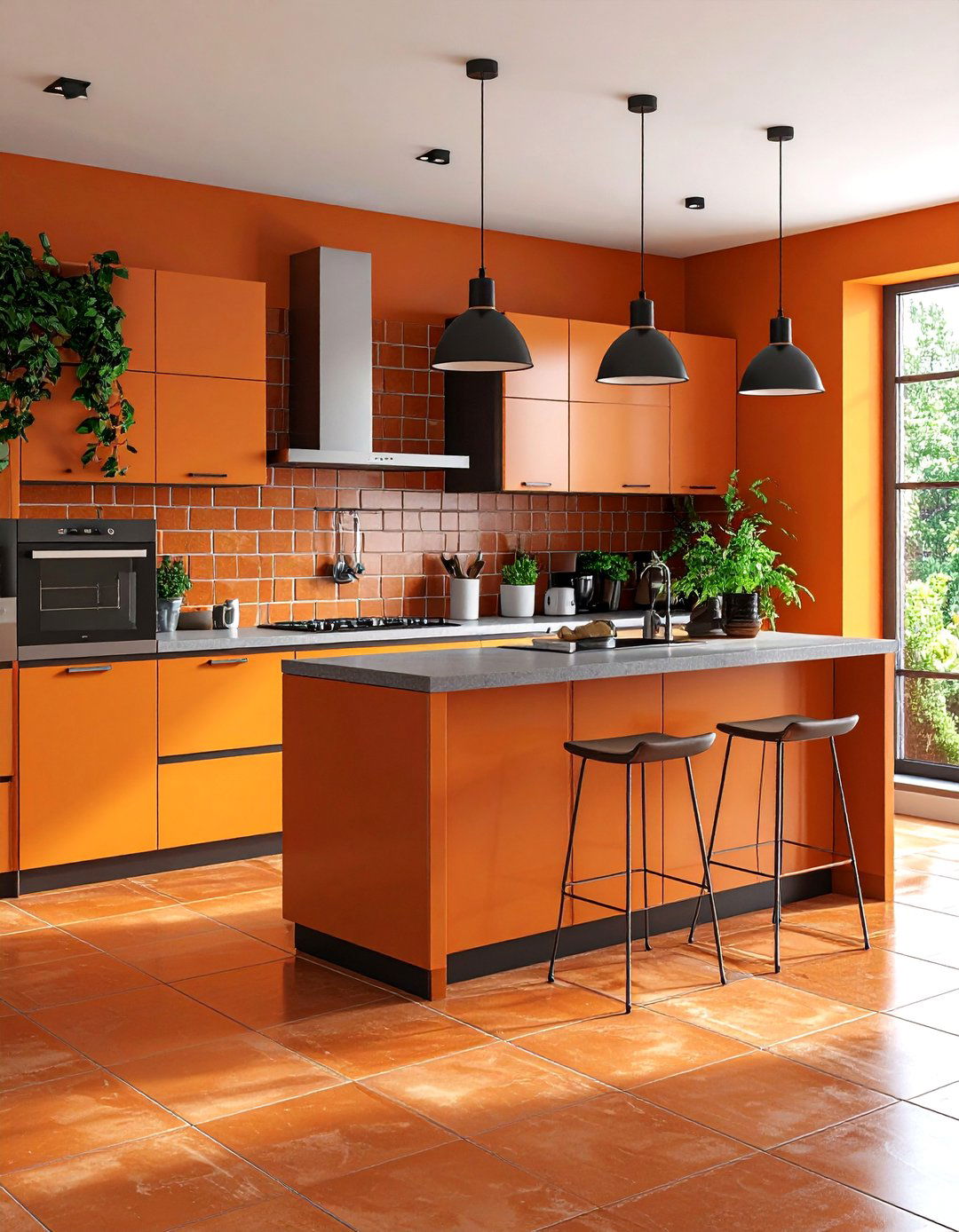
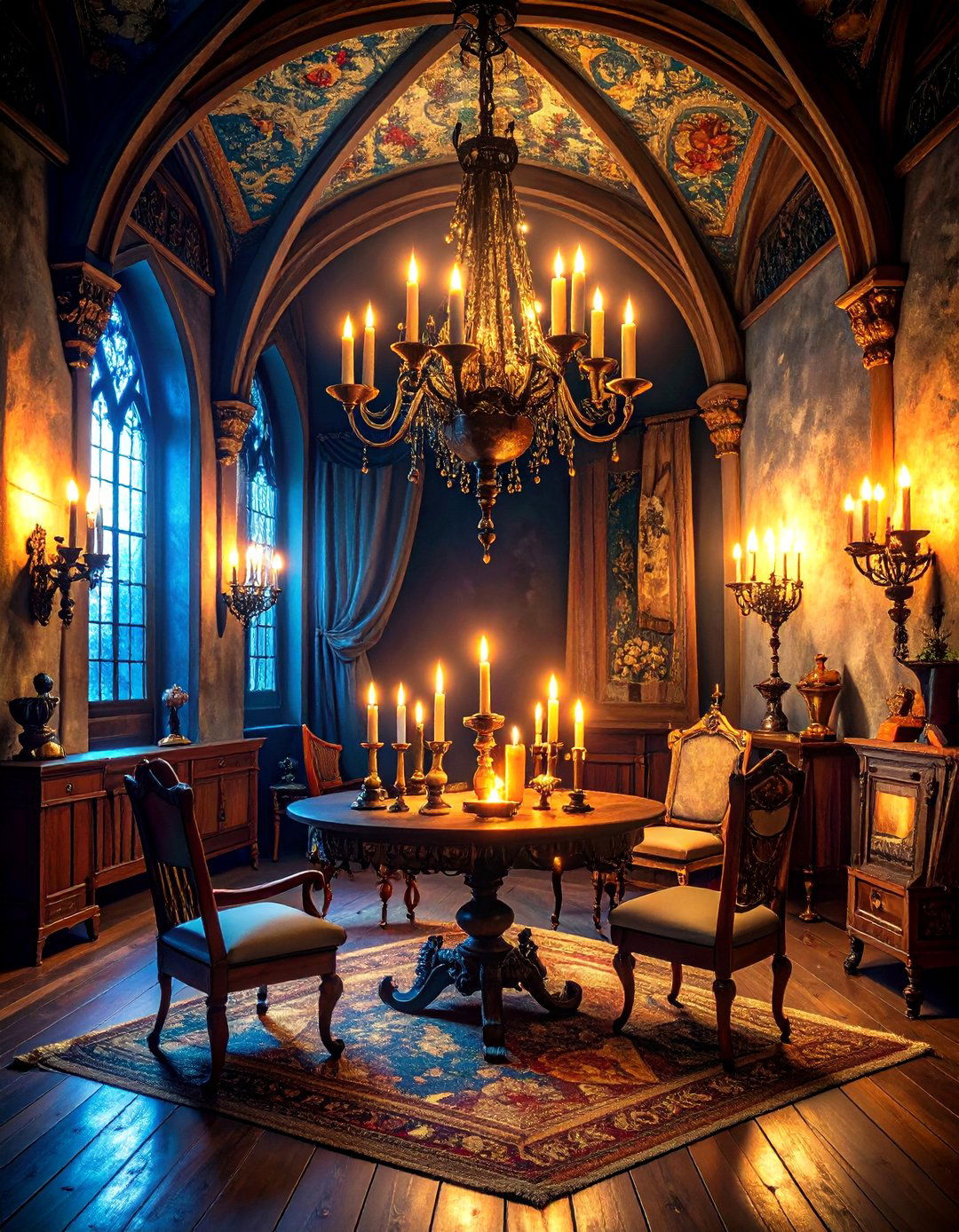
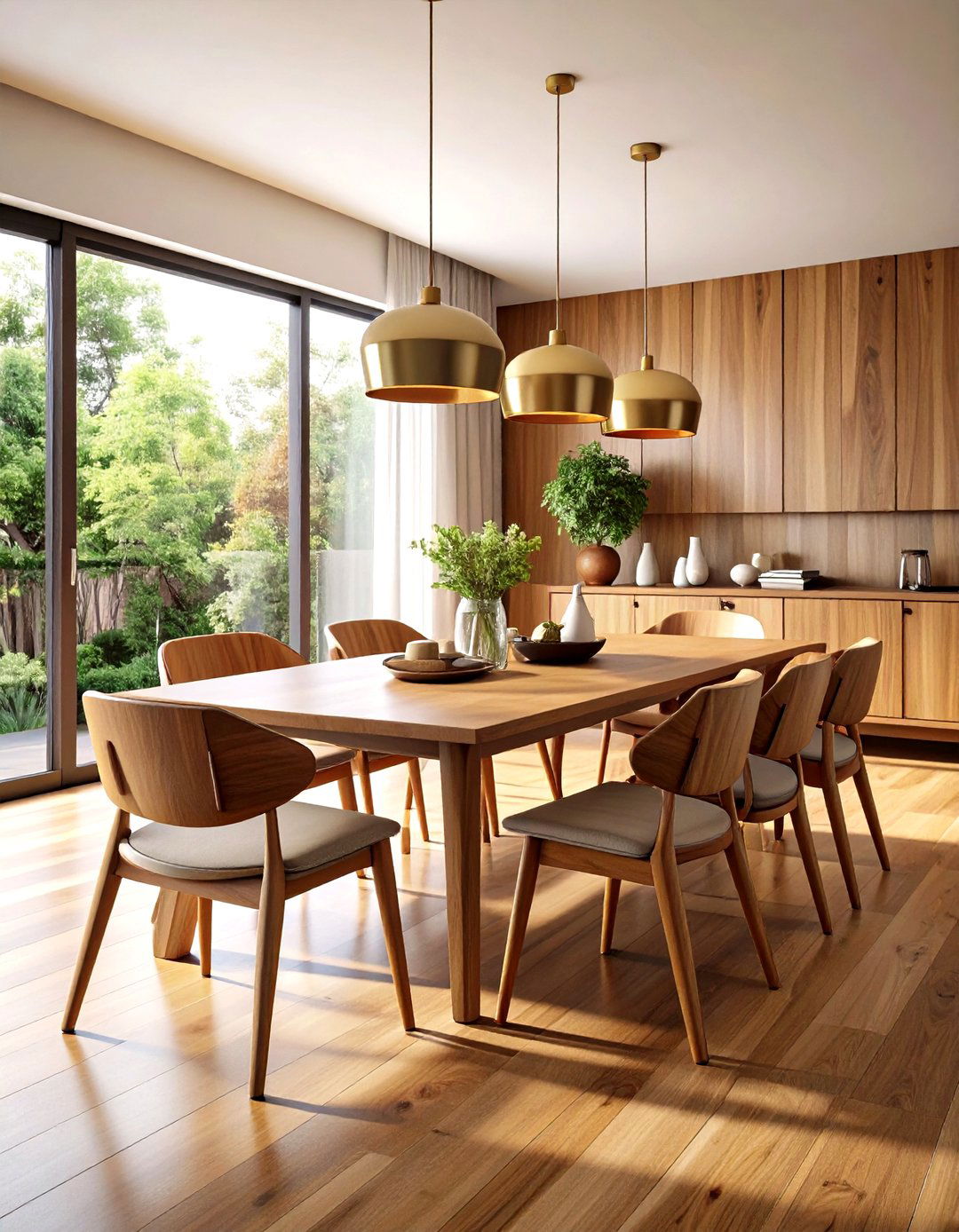
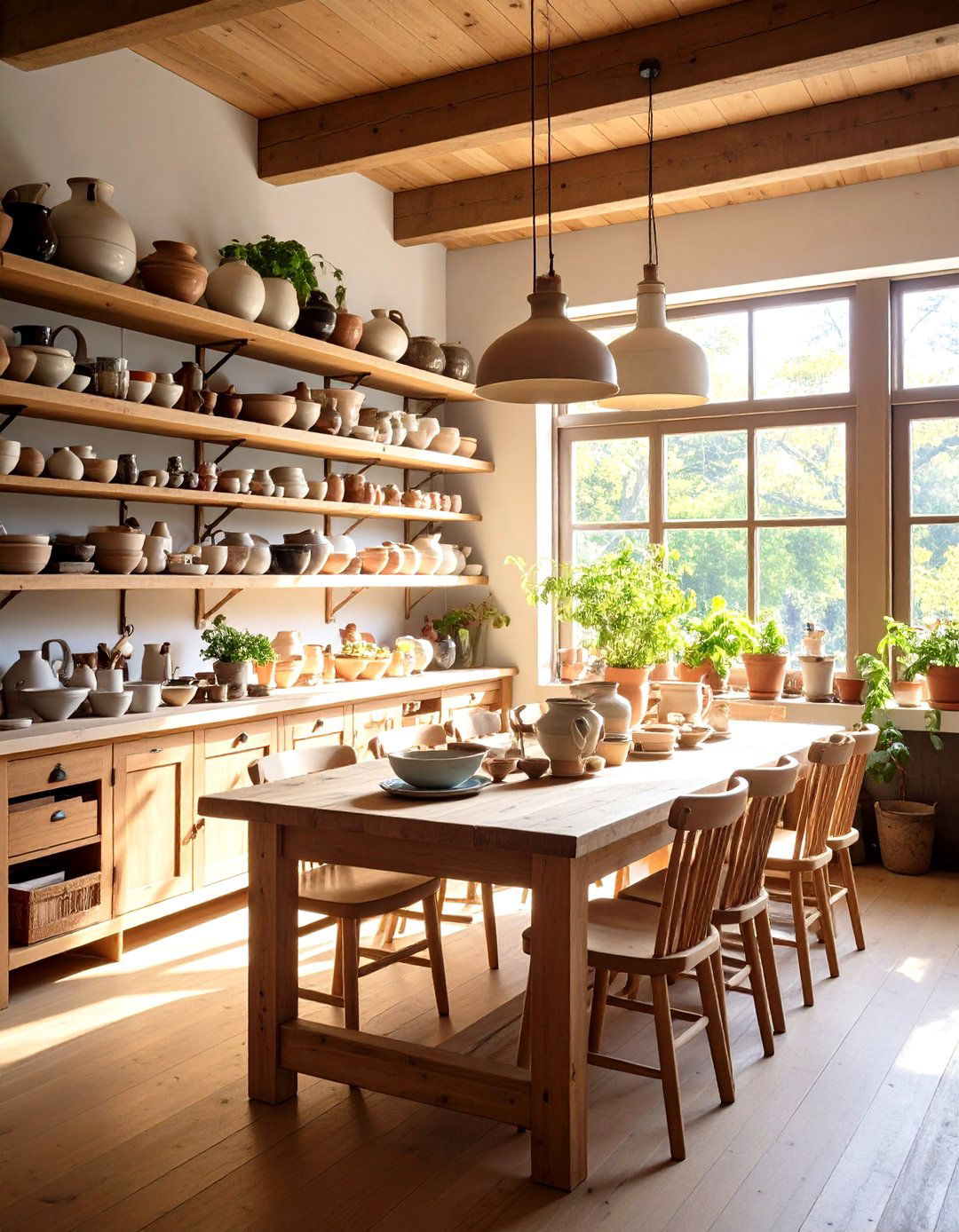
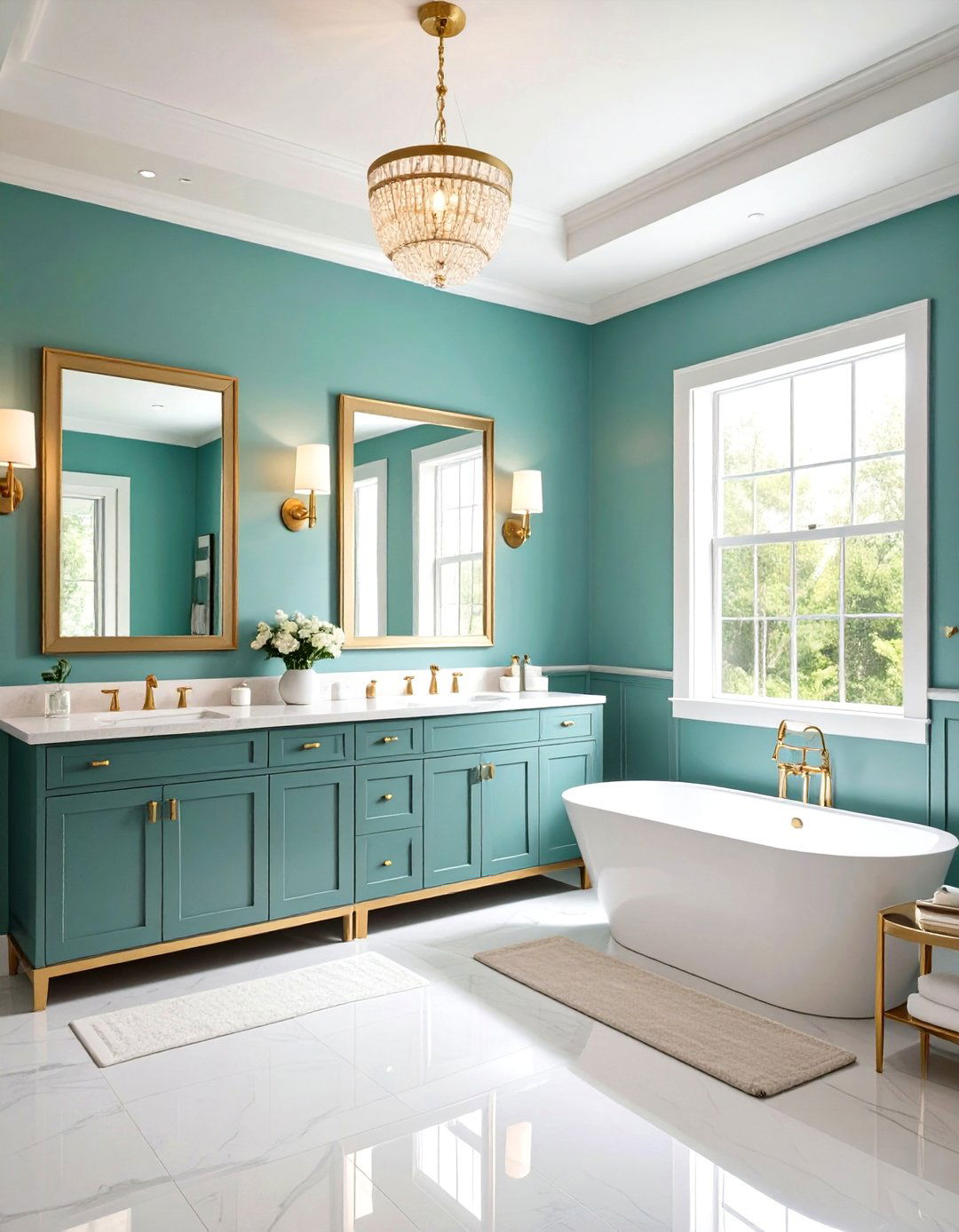
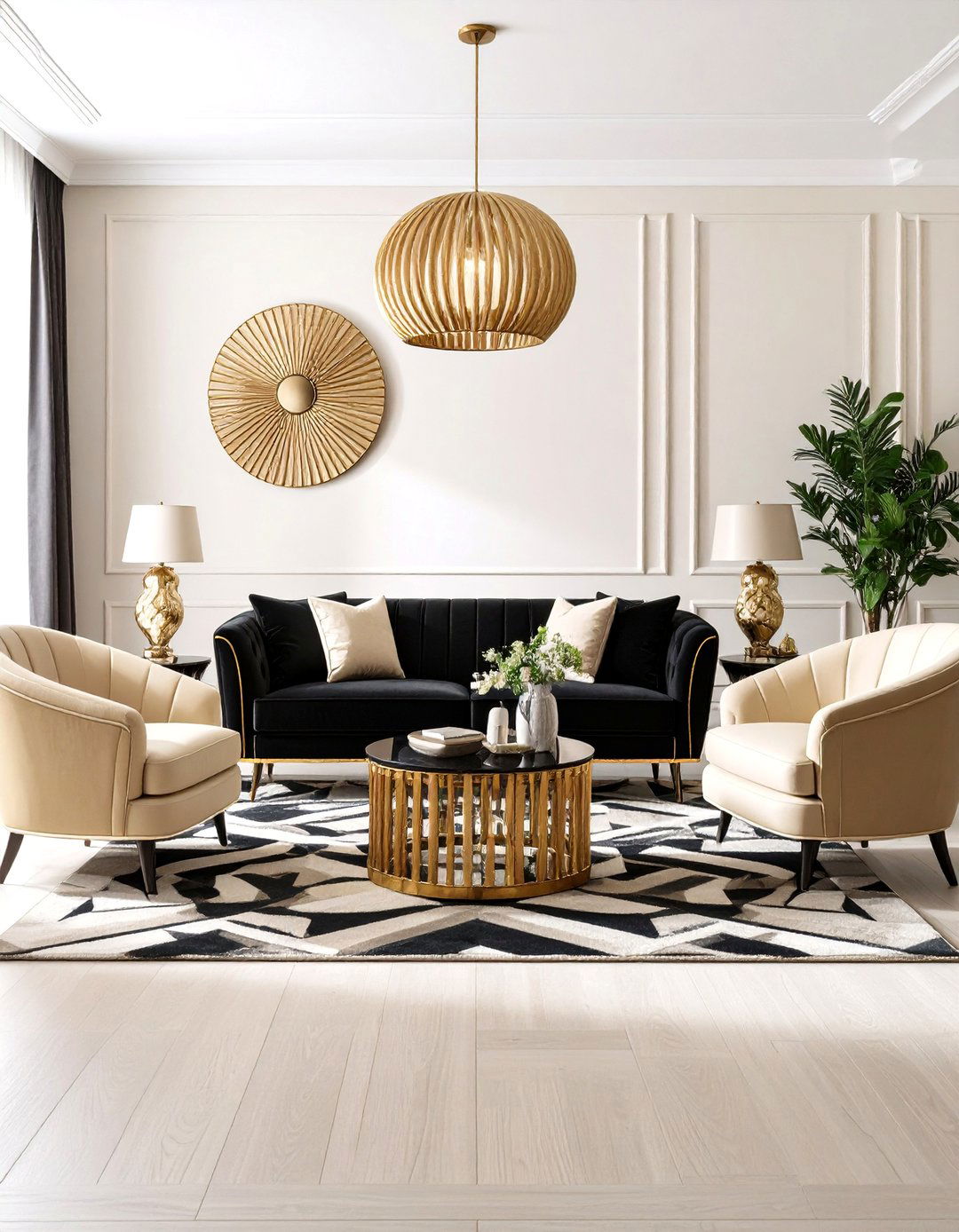
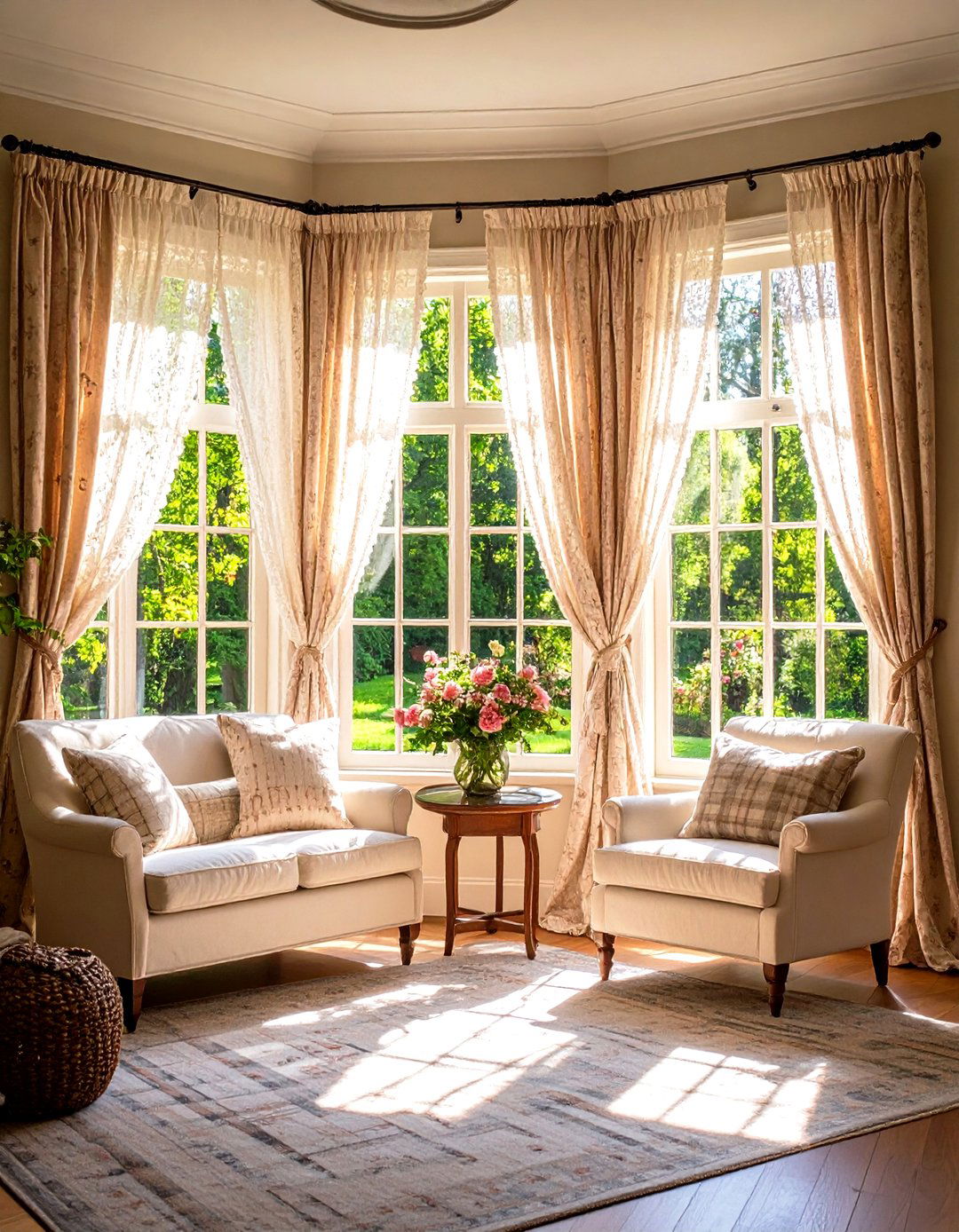

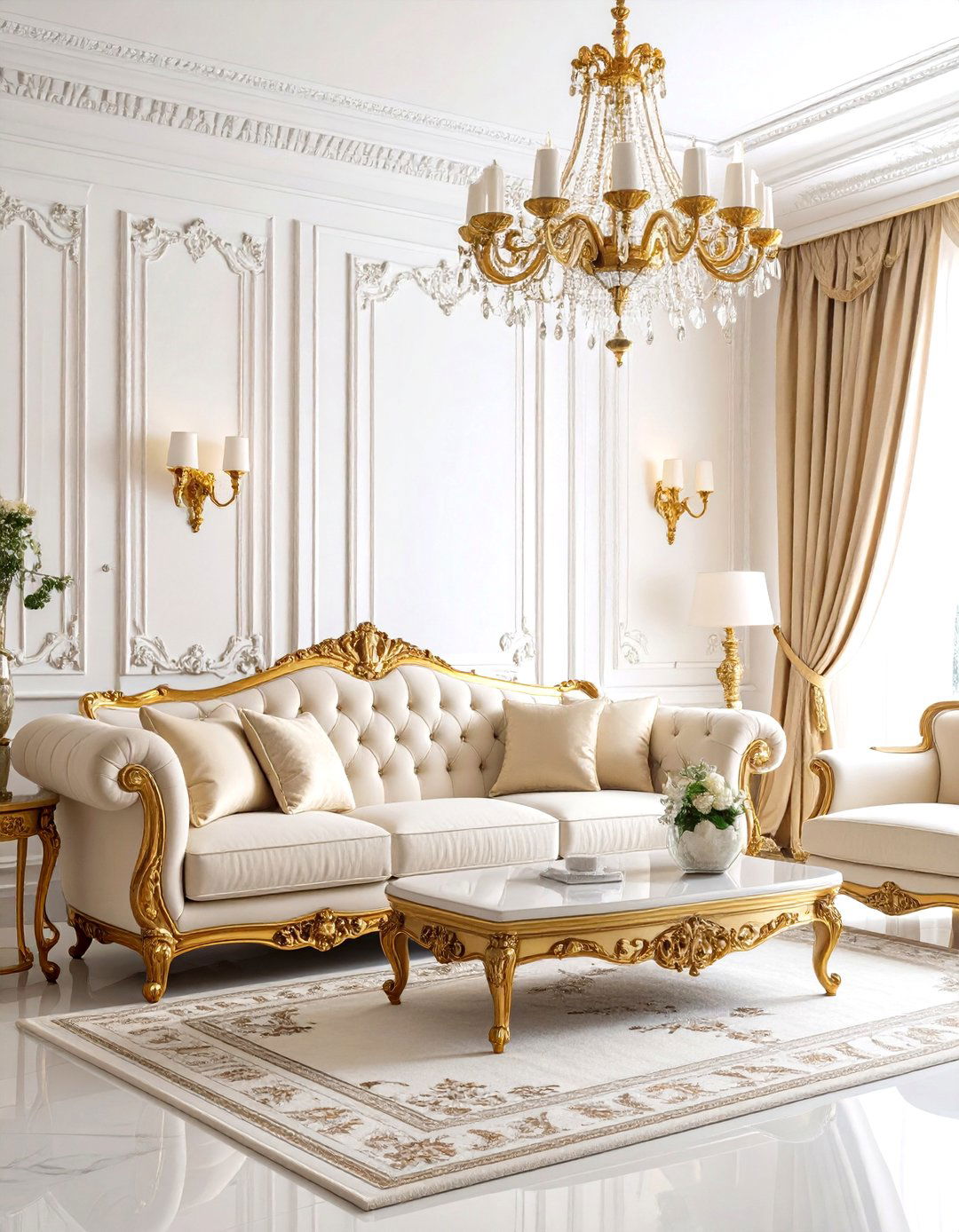
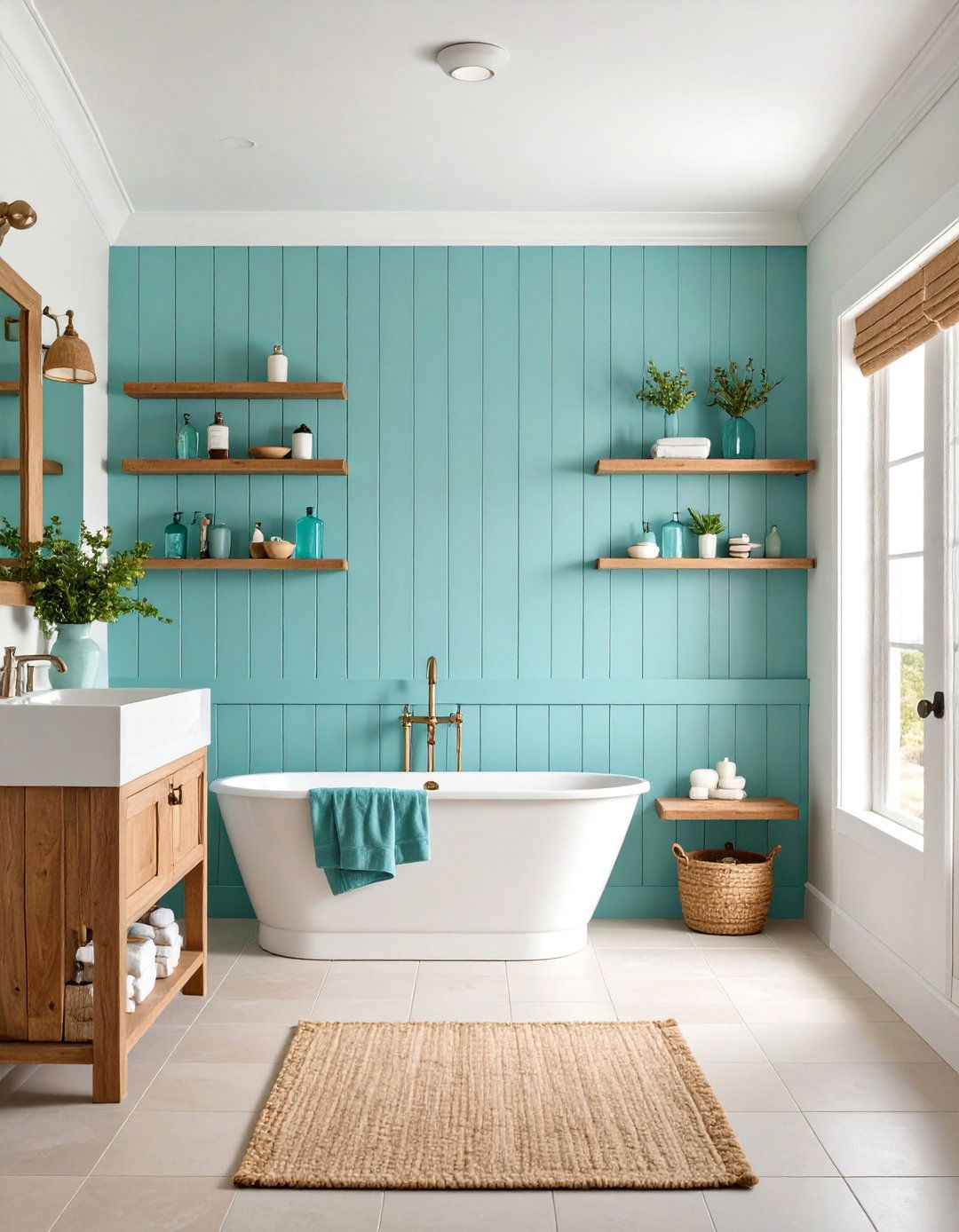
Leave a Reply